Dan Gasser 4pm - 7pm

Now Playing
Bigmouth Strikes Again The Smiths Download 'Bigmouth Strikes Again' on iTunes
The Beatles
The tragic story of Beatles roadie Mal Evans
18 November 2023, 12:00

The Fab Four's personal assistant and road manager was killed by police in January 1976. Here's the sad story of one of the stars of the recent Get Back documentary.
Listen to this article
By Martin O'Gorman
"Mal!" For anyone who's sat through all seven-and-a-half hours of Peter Jackson 's Get Back documentary, there's one character in the Beatles story that has become something of an unsung hero.
Malcolm "Mal" Evans was The Beatles' road manager... and, when their touring days ended in 1966, he became their personal assistant, mate and general helper. In the Get Back doc, you can spot him writing down the lyrics to John, Paul and George's new songs as they're composed and he even gets the role of tapping along on an anvil during rehearsals of Maxwell's Silver Hammer .

"Get Back" Rooftop Performance | The Beatles: Get Back | Disney+
It's also Mal who has to keep the Saville Row police at bay when the famous rooftop concert gets into its stride. When asked which of The Beatles was his favourite, Mal would give his stock answer: "Whichever one has just been nice to me."
This description "road manager" doesn't really do justice to Evans' contribution to the Fab Four's career, but the amiable figure seen in the Get Back movie seems at odds with the story of how Mal died, several years later.
On 5th January 1976, Evans was shot dead by Los Angeles Police Department officers at his home after he confronted the officers with a rifle. It was subsequently discovered that the weapon was just an air rifle. Evans was 40.
How did such a loved and amiable man end up in this tragic situation?
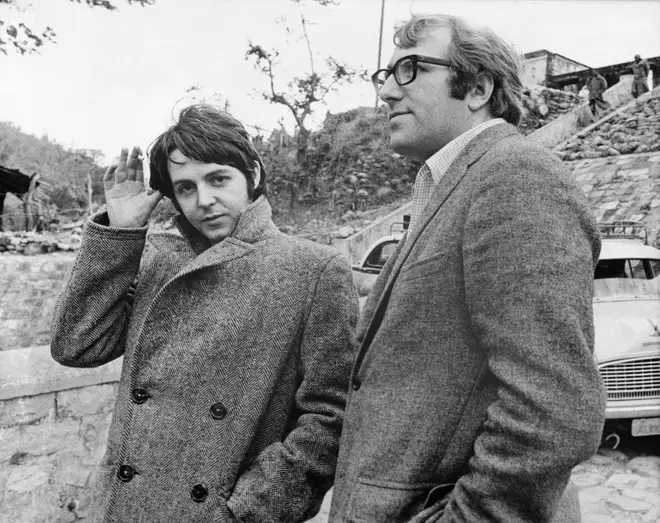
Malcolm Evans was born in May 1935 in Liverpool and grew up in the Wavertree area of the city. Mal got to know The Beatles when he began taking lunch breaks from his job at the Post Office to go and see the band play at The Cavern Club . George Harrison recommended Mal to the manager as a suitable doorman for the cellar venue, thanks to his imposing physical 6ft 6in height.
Mal recalled: "I walked down this little street called Mathew Street that I’d never noticed before and came to this place, the Cavern Club. I’d never been inside a club, but I heard this music coming out – real rock it sounded, a bit like Elvis. So I paid my shilling and went in."
From there, it was only natural that Mal would become the part of The Beatles' road crew once the group started to take off, alongside Neil Aspinall , who would go on to manage the band's Apple Corps company.
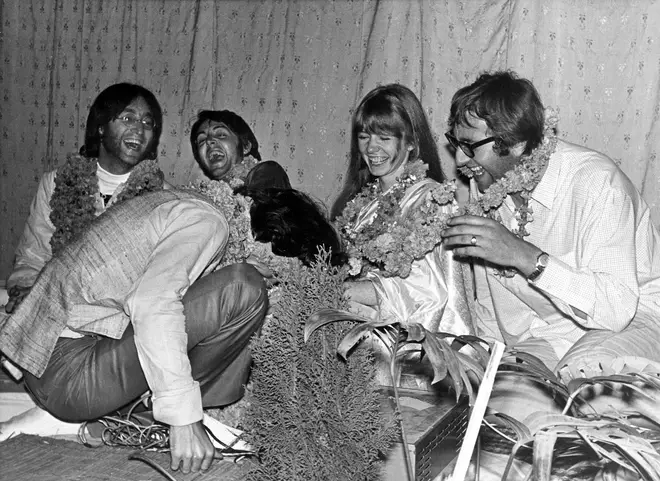
Mal and Neil were by the Fab Four's side throughout the hectic years of Beatlemania , setting up equipment, hustling the group to and from venues and keeping thousands of fans at bay.
Evans was there for all The Beatles' greatest moments: their huge show at Shea Stadium in the US, he appears in the two Beatlemania-era movies A Hard Day's Night a nd Help!, plus he was with the group when they met their hero, Elvis Presley .
"I just sat there with my mouth wide open," recalled Evans of this momentous rock 'n' roll encounter. "I made a big impression on Elvis."
It was Mal who had to negotiate with the authorities in the Philippines when the Fabs inadvertently snubbed the country's First Lady while on tour there in 1966; it was Mal who came up with the name "Sgt Pepper" ; and it was Mal who can be heard counting down the 24 bars of orchestral noise on the song A Day In The Life .
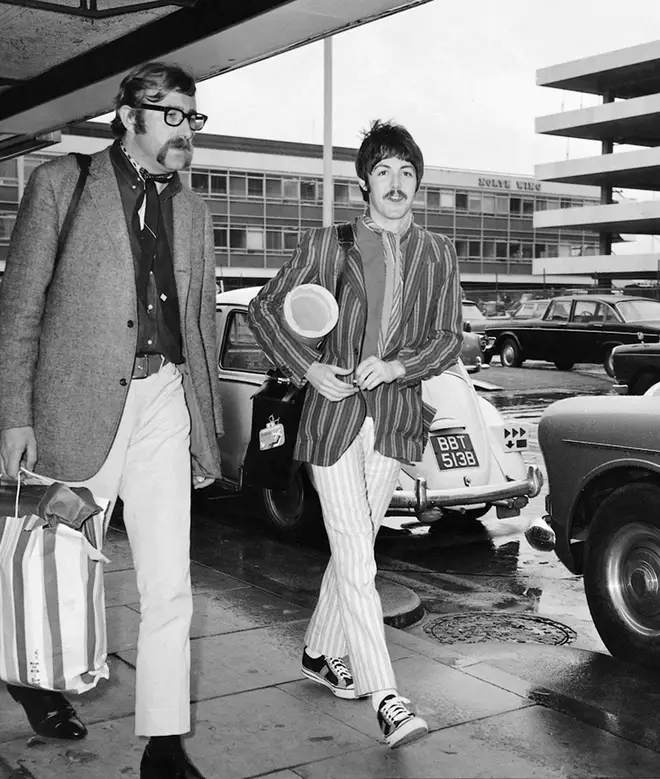
When the Beatles stopped touring in the summer of 1966, Mal became more of a personal assistant to the four musicians, arranging the instruments at sessions and carefully noting down lyrics as the songwriters dictated them.
Mal can be seen at the start of the Get Back sessions with his assistant Kevin Harrington, setting up the drum kit and other instruments for the first day's filming at Twickenham film studios.
Evans also kept fans abreast of what was going on in the group's lives with his diary notes in the official fan magazine, The Beatles Book. He even made an appearance was one of the wizards in the band's TV special Magical Mystery Tour. When Paul McCartney wrote a new song called Let It Be, the draft lyrics included a mention of "Brother Malcolm".

Let It Be (Unnumbered Rehearsal)
While there was still Beatle business to attend to, there was also the subject of the group's own company, Apple Corps. Evans discovered a Welsh band called The Iveys and renamed them Badfinger. He persuaded each Beatle personally to sign to Apple Records and they went on to have a Top 5 hit with Paul McCartney's composition, Come And Get It. Mal produced their single No Matter What in 1970.

Watch the official trailer for The Beatles: Get Back on Disney Plus
Once The Beatles had officially split at the end of 1969, Mal kept his hand in producing Apple artists like Jackie Lomax. When the ruthless businessman Allen Klein took over the running of Apple, Mal was sacked - only for Paul, George and Ringo to reinstate him.
However, without the lifeline of The Beatles and Apple, the work dried up for Mal Evans and things began to unravel. He split from his wife Lily in 1973 and he moved to Los Angeles, where he was involved in the chaotic recording of Keith Moon' s solo album, Two Sides Of The Moon.

Living among the bad influence of these party animals and heavy substance abusers, Evans claimed he was working on a memoir called Living The Beatles Legend , which was to be the ultimate insider's story of the group.
On 5th January, Mal was living in a rented apartment with a new girlfriend, Fran Hughes, and working on the book with his co-author John Hoernie. The manuscript was due to be delivered a week later, but the former Beatles aide was still depressed about his impending divorce.
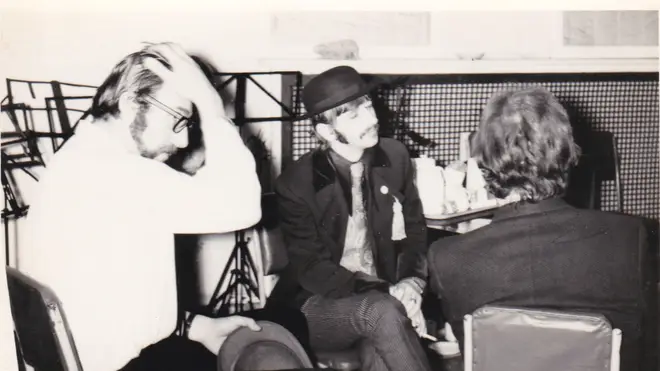
Hoernie and Evans had an argument that was rendered incoherent due to Mal having taken Valium. Mal picked up an air rifle, and with Hoernie unable to get the weapon off his friend, a panicked Fran Hughes called the police. When three armed officers entered Mal's bedroom, the former Beatles roadie pointed the gun straight at them. Not realising it was an air rifle, the officers told Evans to put the weapon down, but he refused. The policeman immediately shot Evans dead.
Mal Evans was cremated two days later and his ashes were sent back to England - but were lost on the way. When he heard about this mishap, his former colleague John Lennon found it bleakly funny: "They should look in the dead letter office", he was reported to have said.
While the book Living The Beatles Legend was never finished, a collection of Mal's diaries and papers were discovered in 1986 and returned to his family. These archives are the basis of a new biography of Evans by author Kenneth Womack, which was published in November 2023.
More on The Beatles
See more More on The Beatles
Why did The Beatles break up? The true story of who left the band first
Which songs did the beatles play at their famous "rooftop" concert, the heartbreaking true story behind the beatles' song let it be, did john lennon really say ringo “wasn’t even the best drummer in the beatles”, the beatles’ white album songs: everything you need to know, trending on radio x, radio x best of british - see the top 100, live forever by oasis named radio x best of british 2024, radio x best of british 2024 playlist, nothing but thieves: soundcheck to stage.
- facebook-rs
Coveted Archives of Beatles Road Manager Mal Evans Will Finally See Light of Day
By Angie Martoccio
Angie Martoccio
While you and the rest of the world have been watching Get Back , you’ve probably noticed the tall, bespectacled gentleman dressed in impeccable turtlenecks. This is Mal Evans , the Beatles ‘ road manager and longtime confidant who died just seven years after the footage was captured. Decades later, he’s finally getting his due, with a biography set for 2023.
Evans’ family teamed up with Beatles scholar and author Kenneth Womack for the biography, which will be published by HarperCollins’ Dey Street Books imprint. The following year, they’ll release the “Holy Grail” for Beatles fans: his archives, which fans have been speculating about for years. The collection contains diaries, manuscripts, and more.
The Beatles hired Evans as their roadie in 1963 and continued working with them when they stopped touring three years later. He was working on publishing the manuscripts himself — with permission from the band — before he died in January 1976 at the age of 40.
“My dad meant the world to me,” Evans’ son Gary said in a statement. “He was my hero. Before Ken joined the project, I thought I knew the story of my dad. But what I knew was in monochrome; 15 months later it is like The Wizard of Oz (dad’s favorite film) because Ken has added so much color, so much light to his story. Ken has shown me that dad was the Beatles’ greatest friend. He was lucky to meet them, but they had more good fortune with dad walking down the Cavern steps for the first time.”
See Noah Kahan Bring Out Shawn Mendes for 'Stick Season' at Toronto Concert
- season of the stick
- By Daniel Kreps
How Jay-Z and the 40/40 Club Ruled NYC Nightlife
- Run this town
- By Abe Beame
Watch Raye Perform 'Escapism,' 'Worth It' in 'SNL' Debut
- My 21st Century Blues
- By William Vaillancourt
Taylor Swift Starts Countdown to ‘The Tortured Poets Department’ With Her Favorite Number
- By Althea Legaspi
Modest Mouse Plot 'Good News' Tour, New Album
- By Brian Hiatt
Most Popular
Joaquin phoenix, elliott gould, chloe fineman and more jewish creatives support jonathan glazer's oscars speech in open letter (exclusive), barron trump’s super-rare outing with dad donald may show why we never see them together, georgia secretary of state sent letter to larry david over 'curb' voting law plot, partynextdoor reveals nsfw 'partynextdoor 4' album cover, you might also like, box office: ‘godzilla x kong’ remains no. 1 as dev patel’s ‘monkey man’ debuts to $10 million, architect and innovator italo rota dies, the best medicine balls, according to fitness trainers, ‘abigail’ review: matt bettinelli-olpin and tyler gillet’s vampire ballerina fails to bite, purdue, uconn advance as host committee seeks another final four.
Rolling Stone is a part of Penske Media Corporation. © 2024 Rolling Stone, LLC. All rights reserved.
Verify it's you
Please log in.
Interview for Classic Bands • 2008 ?
Interview with bob bonis.

McCartney on McCartney
Interviews from the same media
Interview With Wings Drummer Denny Seiwell
2013 • From Classic Bands
Interview with Ed Freeman
2019 ? • From Classic Bands
Spread the love! If you like what you are seeing, share it on social networks and let others know about The Paul McCartney Project.
The interview below has been reproduced from this page . This interview remains the property of the respective copyright owner, and no implication of ownership by us is intended or should be inferred. Any copyright owner who wants something removed should contact us and we will do so immediately.
Bob Bonis was the tour manager for The Beatles’ US tour in 1964, 1965 and 1966.
Q: Wasn’t Mal Evans The Beatles road manager?
A: He was the British road manager. He was the equipment guy, not the road manager. His job was to set up equipment and sort of like a security guy. Neil Aspinall was the very British road manager. In the U.S. he did very little road managing. He couldn’t. His job was to hang out with The Beatles and make sure everything was cool with them. Malcolm was a roadie. He set up all the equipment.
Q: We know you did the ’64 tour, but how many tours and how many years were you associated with The Beatles?
A: ’64, ’65, ’66. Only the American tours. The Stones were the ones I went to Europe with. The Stones had first crack at me. According to the press, The Stones and Beatles were supposed to be bitter enemies, whereas they were quite friendly. They made sure that they never toured roughly at the same time, or if they did, they were continents apart.
Q: It was on the recommendation of The Rolling Stones that Brian Epstein hired you to be the road manager for The Beatles?
A: Kind of. I was the road manager for The Beatles.
Q: Who in The Beatles organization recommended you to Brian Epstein?
A: Well, it was partially The Stones. The Stones had just won the Melody Maker poll for the Best New Group in England. The Beatles won Best in World category because The Beatles had been formed a couple of years earlier. I took the Stones on their first American tour, which was June of ’64, before the big Beatles tour. They sent a Melody Maker reporter with us for two weeks. You know. The Stones had a terrible reputation which they worked very hard to get. They were no problem at all actually. The point was, if The Beatles were the goody two shoes, The Stones were like the horrible kids. They went out of their way to make sure that’s the reputation they got, as did their manager, publicist Andy Oldham. So, in other words, the guy from Melody Maker was sending back reports saying, “You’re not going to believe this, but there’s a guy named Mike Douglas, in Cleveland who has a show in the morning, and this guy Bob Bonis has ’em down there at 7 A.M. on time. Or, this guy Bob Bonis did such and such. They were really great. They were no problem. The point is, all we had to do was go over what the agency wanted, what their management wanted, and if there was something they were really dead set against, we didn’t do it. That’s all. So, all of that stuff was going back to England, and so Brian saw some of that and called The Stones management office, who gave me a hearty recommendation. And of course the other thing was, there was only myself and another guy who did the Dave Clark stuff. Dave Clark was very big at that time. Those were the only two guys who had the kind of experience necessary to do The Beatles tours. So, that was it. And, they got both of us. Does that answer your question?
Q: Part of it. Now, how did you get your job with The Stones?
A: A guy named Norman Weiss who was an agent at GAC (General Artists Corp.) who I worked with before when I was an agent at an old company, MCA, which the government broke up, at least the agency part of it. You still have MCA Records and films. Norman remembered that I always had a reputation for handling tough, wise-guys and I was the logical choice as far as Norman was concerned. I was running a management firm for Jazz people. I had left being an agent and was doing that. Norman had recommended me and that was it.
Q: How tough was it for a “groupie” to get past The Beatles security?
A: Almost impossible. In ’65, and ’66, we carried ex-F.B.I. guys to stay by the elevator. Brian (Epstein – Beatles manager) was super, super worried about their image. You couldn’t get in, unless it was something like Seattle, where girls were hiding in the bathroom.
Q: What about the stories of orgies taking place on the tour, and hookers being brought back to the hotel rooms after the concerts?
A: One disc jockey, thinking he’d do a favor, did bring a bunch back in Atlantic City, and The Beatles wouldn’t touch them. So what happened is, the press and the disc jockeys took care of the young ladies. Brian was super conscious of anything the press would love to grab, and it would be that of course.
Q: So what would The Beatles do after a concert, when they were back in their hotel rooms?
A: In Atlantic City we saw a couple of movies, or we’d play cards. In Atlantic City I went out and got a Monopoly set. We’d play that for hours.
Q: Did The Beatles get on each other’s nerves a lot? They were always so closely confined in their hotel rooms?
A: No. It was surprising. They always had a suite. George and Ringo stayed together in one room, and John and Paul in the other bedroom, and a big, big room in between. That’s an interesting point, because I was shocked that everything went so well, unlike The Stones and the scenes with Brian (Jones).
Q: He was trouble?
A: Well, they were trouble to him. He was trouble to them. It was one of those things. And that went back a long way from when they were paid, and he would disappear with the money, when he was sort of the leader. But that’s another chapter.
Q: Were you there when Elvis and The Beatles met each other?
A: I was there in LA., yes, but I did not go. I mean it was just a very private situation. Malcom went, because oddly enough, he was an Elvis freak. But, that was about it. There was no problem. I didn’t have to go everywhere with them, especially in places like LA. I was the one who went with George to The Whiskey A Go Go when we had that big scene.
Q: Why didn’t The Beatles like disc jockey Murray The K?
A: Because he kept calling himself The Fifth Beatle. That was the only thing. It got to them after awhile. They kept reading about The Fifth Beatle and they knew how hard they worked to get there.
Q: You’ve said The Beatles would tell the most far-fetched stories about themselves, and the press would believe it. Can you give me an example?
A: I don’t even remember anymore. Did I say that? (Laughs). They were far-fetched. I mean it was just jokes. The press was so serious. Every word was like a gem.
Q: Some of the questions asked of The Beatles at Press Conferences were absolutely ridiculous. They were beyond stupid.
A: Those press conferences were fixed. Brian allowed roughly l or 2 press people on the plane that paid usually by the week. Brian made them pay to be on the plane. They didn’t just come on, the way the press does now. He made them pay I think, $1,000 a week. Those people got the stories. The press conferences were a total bore. Questions like, ‘Do you sleep in your pajamas’? and a lot of that junk. So what happened is, the plane people, or someone like myself would scream from the back, a pre-arranged question that would at least make it a little more interesting. And, we’d wait for some kind of funny answer. The guys were unaware of what our questions were, but they knew they’d get some different questions from us, just to make it more interesting for them. Otherwise, they’d be bored to tears. Same question, city after city.
Q: Were The Beatles as funny off camera, as they were in A Hard Days Night?
A: Frankly, I found them even funnier. You know, they would do a show that would have me on the floor. They would do a whole Palladium show for you – Beatles at The Palladium, with the old time comics, and the songs, and the movement up and down before them in the hotel suite with acoustic guitars. Never in the dressing room or anything like that with other people around. It was hilarious. It would’ve been classic if it had been filmed. They were all funny. Maybe John a little deeper and more biting then the others, but they were all funny – even Ringo and quiet George.
Contribute!
Have you spotted an error on the page? Do you want to suggest new content? Or do you simply want to leave a comment ? Please use the form below!
Cancel reply
Your email address will not be published. Required fields are marked *
Welcome, Login to your account.
- Login with Facebook
Recover your password.
A password will be e-mailed to you.

Life and times of Mal, The Beatles’ ‘gentle giant’
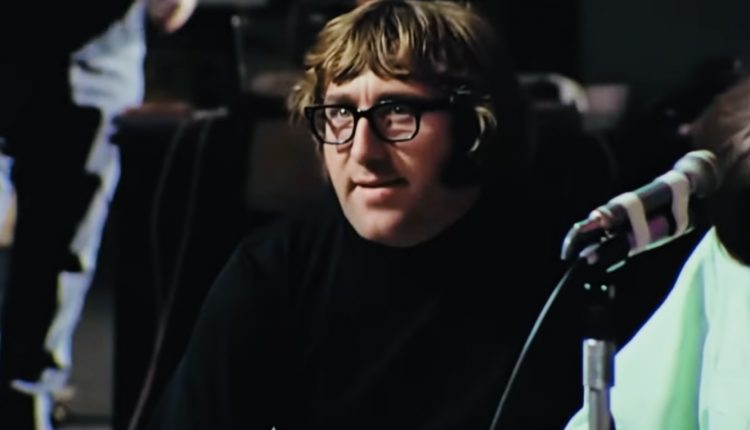
American writer and music historian Dr Kenneth Womack speaks to LBN about his forthcoming biography of Mal Evans, the ‘gentle giant’ who was The Beatles’ ‘greatest friend’. Tony McDonough reports
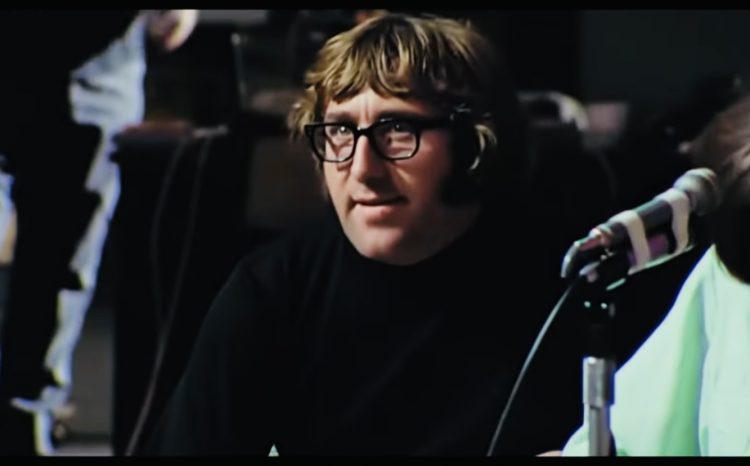
For decades the name Mal Evans has been spoken often among Beatles fans and aficionados but his name hasn’t really resonated much beyond that community,
However, thanks to film director Peter Jackson’s widely acclaimed The Beatles: Get Back film trilogy, which documents three weeks in the life of the Fab Four as they wrote and recorded the Let It Be album, countless people are now asking ‘who was the big guy who was always around them?’.
Mal was a telephone engineer in Liverpool who befriended George Harrison and was hired as a doorman at the renowned Cavern Club. He later became The Beatles’ tour manager. But he was much more than that. He became their confidante, their “greatest friend”.
For many years people have talked of the legendary ‘fifth Beatle’, with producer George Martin, manager Brian Epstein, deposed drummer Pete Best, keyboard wizard Billy Preston and Yoko Ono all put in the frame. There can be little doubt that Mal also has a big claim to that title.
In February this year, a never-before displayed notebook featuring Beatles song lyrics and scribbles from Mal’s time with The Beatles, went on display at The Beatles Story museum at the Albert Dock in Liverpool.
And those fascinated by the life and times of the ‘gentle giant’, whose life met a tragic end in Los Angeles in 1976, can now look forward to a full biography of this ordinary Scouser who led an extraordinary life.
Acclaimed US-based writer, literary critic, music historian and leading Beatles authority, Dr Kenneth Womack, has worked closely with Mal’s family and his estate to produce two books to be published in 2023 and 2024. The first will be a biography of Mal’s life and the second, a fully illustrated offering from the family’s archives.
“What I’ve discovered in this archive is more than I could have ever truly imagined,” said Kenneth. “I am honoured and thrilled to present this biography and accompanying materials with the historical integrity that they deserve.”
Father-of-two Mal was nicknamed the ‘Gentle Giant’ and ‘Big Mal’ and was a constant companion of the group. On Get Back he can be seen striking an anvil with a hammer as the Beatles performed Maxwell’s Silver Hammer .
Post-Beatles he became a music producer in his own right but his life met a tragic end. Early in 1976 his wife Lily, whom he’d met at a funfair in New Brighton, asked for a divorce. Mal, who was living in Los Angeles, reportedly fell into a depression.
On January 4, 1976 it was reported to the police that a troubled Mal started brandishing an air rifle at his apartment. Police were called and he reportedly pointed the air rifle at them, at which point they shot him dead.
At the time Mal was planning his own autobiography with the written permission of The Beatles themselves. Though he started off as the band’s roadie in August 1963, he became, says Kenneth, “their most intimate companion”. He ensured their stage shows went like clockwork, prepping their instruments and making sure everything was in order.
In 1966, The Beatles had tired of live performances, the novelty of trying to make themselves heard above the screaming fans having long worn off. They retreated to the studio and experimented with different sounds and styles.
Mal played a key role in this period, says Kenneth. He explained that Mal held a “special place in the creative universe” of John Lennon, Paul McCartney, George Harrison and Ringo Starr. When the Beatles formed Apple Corps., Mal refashioned himself as a talent scout, and developed a number of rock ‘n’ roll acts for the fledgling label—most notably, Badfinger.
READ MORE: Beatles Story to show never-before-seen photographs
Kenneth told LBN it was “pure coincidence” that his work on the books, and with Mal’s family, coincided with Peter Jackson’s making of Get Back . He said: “We had already begun working together to bring Mal’s incredible story to life.”
He added the success of the film had significantly heightened the interest in Mal’s life. He explained: “The documentary has demonstrated how integral he was—not only to their story, but also in terms of making their music.
“He mothered them in many ways, providing them with meals, looking after their lives so that they could make all of this wonderful, lasting music. And by the same turn, he was always happy to help out with a lyric or play an instrument.”
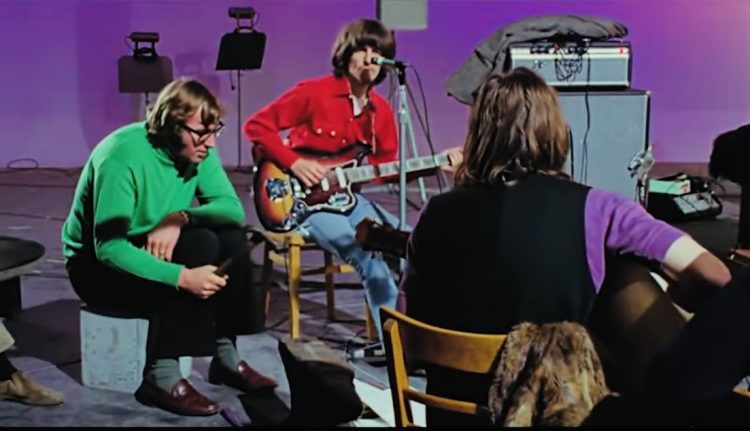
In 2020, Mal’s family turned to Kenneth to bring the archives to the world. Described as vast, it includes never before seen archive material including diaries, manuscripts, and photographs associated with The Beatles. Mal’s son, Gary Evans, said: “My dad meant the world to me. He was my hero. Before Ken joined the project, I thought I knew the story of my dad.
“But what I knew was in monochrome -15 months later it is like The Wizard of Oz (Mal’s favourite film) because Ken has added so much colour, so much light to his story. Ken has shown me that dad was the Beatles’ greatest friend. He was lucky to meet them, but they had more good fortune with dad walking down the Cavern steps for the first time.”
Within the archive is a poem written by Mal about Gary, imagining the then five-year-old as a seafaring adventurer. Kenneth describes it as “absolutely heartwarming” and says it speaks to Mal’s devotion to his son. He describes it as one of the highlights of the archive. It reads:
The afternoon was pleasant and the crew just loafed about,
Using old electric irons to catch the golden trout
That fluttered in the evening breeze and left you in no doubt
As to who they loved the most.
’Twas Gary, Captain Gary, who was the perfect host!
Dr Kenneth Womack is Professor of English and Popular Music at Monmouth University. He holds a PhD and is the author or editor of 40 books. These include Long and Winding Roads: The Evolving Artistry of the Beatles (2007), the Cambridge Companion to the Beatles (2009) and The Beatles Encyclopedia: Everything Fab Four (2014).
He has produced a multivolume study devoted to the life and work of Beatles producer George Martin and his latest book, John Lennon, 1980: The Last Days in the Life , was published in September 2020 to rave reviews.
The Mal Evans project has been developed by Kenneth in collaboration with the Malcolm Frederick Evans Estate and Matthew Elblonk, a literary agent with DeFiore and Company. Carrie Thornton at Dey Street Books secured World English rights. Harper Nonfiction will publish in the UK.
Although he lived day by day in the company of very wealthy people, he himself was paid a modest wage. When Apple was formed in 1968 he was promoted from road manager to personal assistant, although his £38 weekly wage remained the same.
He was reported to have had money troubles in those days. But Kenneth believes there is little sign of any resentment about his place in The Beatles’ world. He said: “Like all of us, Mal was a human being, and he longed for recognition, as well all do.
“But he was also a company man in the best sense of the phrase. He loved The Beatles, admiring them to no end and cherishing the art that they made. He was proud of his role in helping to make their professional lives and ambitions happen. It was a genuine labour of love.”
Ships on the Mersey and high and low tides on Saturday, March 19
Ships on the mersey and high and low tides on sunday, march 20, you might also like more from author, cammell laird reports strong start to 2024, wellness in the city returns to liverpool, peel ports invites bids for £750m of works.
Your email address will not be published.
Save my name, email, and website in this browser for the next time I comment.
Follow Us @liverpoolbusiness
Username field is empty..

‘Living the Beatles Legend’ Review: Mal Evans on Tour
M al Evans, a former road manager for the Beatles, was killed in a confrontation with police in Los Angeles on the night of Jan. 4, 1976. He left behind an estranged wife and two children, a girlfriend, a group called Splinter that did not trouble the charts, and the unfinished manuscript of his autobiography. His son, Gary, has passed the manuscript to Kenneth Womack of Monmouth University in New Jersey. Full of insight and eyewitness detail, “Living the Beatles Legend” tells the Beatles story inside-out. It is also a cautionary tale. Evans loved Elvis, the movies and cowboy shootouts. Living the dream turned his life upside-down, then killed him.
Evans was born in Liverpool in 1935, five years before the elder Beatles, John Lennon and Ringo Starr. Married to his first love, Lily, in 1957, he was working as a post-office electrician when he dropped by the Cavern Club on a lunchbreak and first heard the Beatles. He began working as a Cavern doorman for extra money, then moonlighted working security in the offices of Brian Epstein, the band’s manager. In July 1963, Epstein hired him to help the band’s one-man road crew, Paul McCartney’s schoolfriend Neil Aspinall.
Evans was a shy giant and, he said, an “ardent coward,” but he could drive, he knew how electricity worked, and he could easily lift “the Coffin,” Mr. McCartney’s homemade bass amp. “He should have been in the circus,” Mr. Starr later said. He soon was. The Beatles became the most famous quartet since the Four Horsemen of the Apocalypse. They toured with only four companions: Epstein, Aspinall, the publicist Derek Taylor and Evans. The diary that Evans began as a record of his infant son’s development became a primary document of musical history and the madness of Beatlemania.
As road managers go, Evans was a one-man band. The “get-in” at the venue was at 3 p.m. Evans primed the police, security guards and management, loaded in the gear, tuned the guitars, and set up and tested the drums and amps. When the band arrived, he fixed tea and sandwiches. Before shows, he prepared their stagewear and polished their Beatle boots. Between shows, he collected takeout and dried the boys’ wet shirts in the theater’s boiler room. During shows, he replaced broken guitar strings, fixed power outages, intercepted stage invaders and, when the band played in the round at the Washington Coliseum, ran onto the stage and physically rotated Mr. Starr’s drum riser under a hail of jelly beans.
After the show, the band fled via limousine (in America, via ambulance or fortified truck) while “Big Mal” ferried their gear to his lipstick-covered van. In the hotel lobby, Evans and Aspinall selected girls for the band, and for themselves too. “If one could get an Oscar for safely procuring women,” the journalist Larry Kane observed, “Mal Evans would have received the lifetime achievement award.” Lennon later compared the band’s debauches to Fellini’s “Satyricon,” but they were careful to be discreet. Lily Evans had little idea at first. She thought Mal had only “four mistresses: John, Paul, George, and Ringo.”
Mr. Womack’s previous books include a two-volume biography of George Martin, the producer who shaped the band’s sonic innovations. Here Mr. Womack does a fine job of communicating the novel and dangerous unrealities of a new kind of stardom. In Chicago, Evans blocked a woman from handcuffing Mr. McCartney to her arm. There was no electricity for the stage at Cleveland’s Public Auditorium because the promoter didn’t understand that the band played electric guitars. The Dallas police sent only two motorcyclists to the airport, and girls climbed onto the wings of the Beatles’ plane as it taxied in.
Evans carried a “doctor’s bag” containing Band-Aids, screwdrivers, cigarettes, cough drops, guitar strings and picks, a “dope bag” stocked with drugs, and a “sin kit,” a violin case containing booze. Before leaving London for the band’s third and final American tour of 1966, Evans and Aspinall rolled “hundreds of joints,” which they packed into empty cigarette cartons and resealed with cellophane. When the band was seeing Amsterdam from a glass-topped boat, George Harrison admired one fan’s “groovy-looking” cloak. Evans jumped into the canal, swam ashore and turned up at the hotel three hours later, cloak in hand.
By the summer of 1966, the band hated touring, and Evans was an “absolute wreck.” He moved his family to London and served the boys in the studio at Abbey Road, but, Mr. Womack writes, the “carefully nurtured compartments of his life were starting to overflow.” Evans’s fantasy life was more rewarding than reality. Instead of attending his daughter’s birth, he made tea and toast at the all-night sessions that produced “Paperback Writer” and “Rain.” When he finally took his family on a vacation, it was a Mediterranean cruise with Harrison and the guitarist’s mother.
Evans added handclaps on “Birthday” and harmonies on “Dear Prudence.” He hired the bus for the “Magical Mystery Tour” and dressed up as a flunky for the “Penny Lane” video. He brainstormed the idea for what was initially called “Doctor Pepper’s Lonely Hearts Club Band” with Mr. McCartney, contributed to Mr. McCartney’s lyrics to “Here, There and Everywhere,” “Fixing a Hole” and “The Long and Winding Road,” sourced a blacksmith’s anvil in central London so that he could hammer it on “Maxwell’s Silver Hammer,” and washed the dirty backside of Mr. McCartney’s dog so it didn’t foul the limo.
“I was to receive no credit,” Evans wrote, “and, as it turned out, no royalties.” When the band broke up, he followed Lennon and Mr. Starr to Los Angeles. He tried to become a manager and producer, but his drink and drug habits were uncontrollable. “There’s no regular life anymore—it’s gone,” Evans complained to an American girlfriend. When he sent his son a birthday message on a cassette, he forgot to erase a recording of him and his new lover. Realizing he had lost Lily and his children, he got drunk and high on cocaine and then took a bottle of Valium. When the police came, he raised his Winchester rifle. It was suicide by police officer but also death by show-business misadventure.
Mr. Green is a Journal contributor and a fellow of the Royal Historical Society.
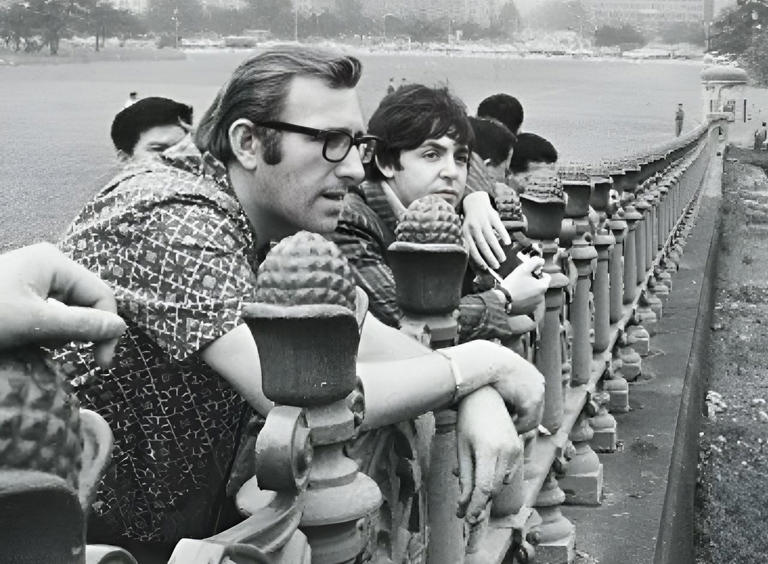
Meet Brian Epstein, the Man Who Discovered the Beatles

“His story an against all odds kind of thing and he is essential to why we know the Beatles at all. It was unbelievable good luck on their part to connect with him.” says Robert Rodriguez, author of Revolver: How The Beatles Reimagined Rock ‘n’ Roll , and the podcast, Something About The Beatles.
Born in Liverpool in 1934, Epstein was the son of Harry and Queenie Epstein who were of Eastern European Jewish origin and had built a successful retail business selling furniture, appliances and records. Dapper and erudite, the creative Epstein had dropped out of London’s Royal Academy of Dramatic Art to return to Liverpool and work at the family business where he showed a flare for fashioning visual displays and a knack for creating loyal customers, especially in the music department.
Epstein believed in the Beatles since the moment he first saw them perform
It was November 1961 when Epstein decided to take in a musical group he had been hearing about. John Lennon , McCartney, George Harrison and their then drummer, Pete Best, were performing a lunchtime concert at the nearby Cavern Club. Epstein was enthralled by what he saw. “I was immediately struck by their music, their beat and their sense of humor on stage,” he said of his initial attraction. “And even afterward, when I met them, I was struck again by their personal charm and it was there that, it all started.”
He talked the band into signing him as their manager in early 1962. “He brought utter and total belief in them that they were an entity that the world would fall in love with, just as he had when nobody else in Liverpool really saw that,” says Rodriguez.
A neophyte in the world of talent management, Epstein immediately began working on raising their profile both in and outside of Liverpool. He cleaned up their image; gone were the days of swearing, smoking and eating onstage during performances. Jeans and leather jackets made way for sharp suits and similar haircuts.
“He had the belief and the vision for what the Beatles could be when basically they were the equivalent of punks,” says Rodriguez. “He steered them to a recording contract which happened within six months of him signing with them, and by the following year, they are performing for the Royal family. He saw them as this potential entertainment juggernaut, getting them into films, getting them into TV, playing up their charisma, personality and humor.”

Epstein wasn't in it for the money - he really believed in the Beatles' talent
With the band’s new image and Epstein’s knack for engineering publicity, the Beatles were soon playing better venues to bigger crowds. Drummer Best was replaced with Ringo Starr in 1962. In 1963 the lead single from their album of the same name, “Please Please Me,” topped the U.K. charts and began a streak that would see 11 of their 12 studio albums through 1970 reach No. 1 on the U.K. charts. Later in 1963 Epstein traveled to the United States and booked an appearance for the band on Ed Sullivan’s popular Sunday evening variety television program. Beatlemania began sweeping the world.
Throughout, Epstein kept the band focused amid touring dates and studio sessions. “The thing that really sets him apart from other management types of the era was he was never in it for the exploitation. He wasn’t in it to make his fortune off the Beatles back and hard work,” Rodriguez says. “He recognized that there was something special there and he needed to keep them on a certain trajectory. Which he did to his dying day.”
He wasn't a great businessman
Epstein is often accused of negotiating bad deals regarding copyright and merchandising, including the agreement that would eventually see McCartney and Lennon lose ownership rights to their classic songs. “The rap on Brian is that he wasn’t much of a businessman, that he cost them millions,” says Rodriguez. “True enough, but that’s sort of beside the point because those millions never would have been made had it not been him recognizing what they needed to connect with the public.” Even McCartney gave him the benefit of the doubt in hindsight, reportedly saying of the era: “British people didn’t know that stuff at the time.”
Epstein began to live the rock 'n' roll lifestyle
As the band achieved new heights of global success, Epstein’s personal life began to slide. Though the tight-knit inner circle of the band often teased Epstein good-naturedly about being gay, he lived in a closeted era where homosexuality was still illegal in England. He had begun taking stimulants to battle fatigue during the constant touring schedule and later developed a dependency on Carbromal, a barbiturate-like hypnotic sedative. Aware of his addiction, Epstein sought treatment at a private clinic while the band was in the studio recording the Sgt. Pepper album, but was unsuccessful in his attempt to curb his drug use.

He died suddenly during Beatlemania
The Beatles’ final commercial concert, held at San Francisco’s Candlestick Park in August 1966, marked the end of four years of almost non-stop touring and began a period dedicated to studio recording. With the constant organizational workload removed, many believed Epstein’s importance to the band would wane. That notion would never be proved as Epstein died unexpectedly due to an overdose of sleeping sedatives mixed with alcohol on August 27, 1967. He was 32. Officially ruled an accident, rumors circulated it was suicide.
Biographer Rodriguez questions the validity of such, noting in the weeks prior to his death Epstein had been dealing with the recent death of his father and would not have added further burden to his beloved and grieving mother. Though Rodriguez acknowledges Epstein had had one documented effort at taking his own life in the year prior to his death, he believes the manager had turned a corner. “He was still trying to get off his addiction to pills, he’d checked himself in [to rehab] and Paul is writing him letters of support and those two are planning the future of the Beatles. So, I don’t think, not least because of the death of his father and what it would have put his mother through if he decided he would kill himself, I don’t see that as part of his thinking at all.”
The Beatles broke up three years after Epstein's death
With Epstein gone, the band was suddenly adrift. He was the one who had kept them on track, organized their schedules and was their constant champion. Less than three years following Epstein’s death, the Beatles would disband and go their separate ways. “Every lucky break they could have got, connecting with the right person at the right time and in the right place they did, up until Brian died,” Rodriguez says of the group. “It was an astonishing run of luck. And after that things began to fall off and they knew it in hindsight.”
Epstein was posthumously inducted into the Rock and Roll Hall of Fame almost 50 years after his death
Inducted into the Rock and Roll Hall of Fame in 1988, the Beatles have estimated sales of over 800 million records worldwide. They have had more No. 1 albums on the British charts and sold more singles in the U.K. than any other act. Epstein, the alchemist behind the success of the Fab Four, was inducted posthumously into the Hall of Fame in 2014 in the non-performer category. The original contract between Epstein and the Beatles fetched £240,000 (more than $310,000 U.S. dollars) at auction in London in 2008.
“He had achieved his wildest dreams but I don’t think he was done being hungry artistically,” Rodriguez says of Epstein at the time of his death. “He saw the Beatles as going anywhere they wanted to that no band had gone before, no artist. Certainly, their ambitions were not curtailed in the least in 1967. They were on top of the world. the Beatles recognized the loss of Brian as something utterly devastating, to their esprit de corps, to whatever they thought they could do business-wise. He was the guy they needed and they didn’t have him anymore. If he lived it would have made all the difference.”
Famous Musicians
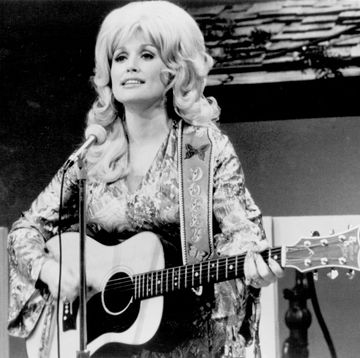
Sean “Diddy” Combs

Carrie Underwood Is Expanding Her Music Empire

Céline Dion Gives Emotional Health Update on IG

Tyler Childers

Amy Winehouse

Justin Timberlake
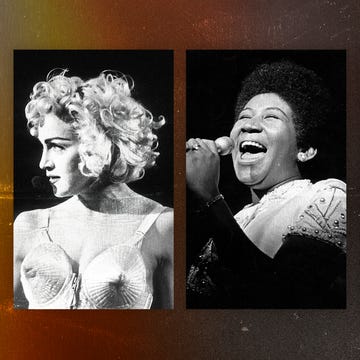
The Best Music Documentaries

10 Facts About “Need A Favor” Singer Jelly Roll

- Share full article
Advertisement
Supported by
Peter Brown, One of the Beatles’ Closest Confidants, Tells All (Again)
At 87, the dapper insider is releasing a new book of interviews conducted in 1980 and 1981 with the band and people nearest to it.

By Ben Sisario
Peter Brown stood in his spacious Central Park West apartment, pointing first at the dining table and then through the window to the park outside, with Strawberry Fields just to the right.
“John sat at that table looking through here,” Brown said, “and he couldn’t take his eyes off the park.”
That’s John as in Lennon. And the story of the former Beatle coveting this living-room view in 1971 — and how Lennon and his wife, Yoko Ono, eventually got their own place one block down, at the Dakota — is just one of Brown’s countless nuggets of Fab Four lore. In the 1960s he was an assistant to Brian Epstein, the Beatles’ manager, and then an officer at Apple Corps, the band’s company. A key figure in the Beatles’ secretive inner circle, Brown kept a red telephone on his desk whose number was known only to the four members.
And it was Brown who, in 1969, informed Lennon that he and Ono could quickly and quietly wed in a small British territory on the edge of the Mediterranean, a piece of advice immortalized in “The Ballad of John and Yoko”: “Peter Brown called to say, ‘You can make it OK/You can get married in Gibraltar, near Spain.’”
Next week, Brown and the writer Steven Gaines are releasing a book, “All You Need Is Love: The Beatles in Their Own Words,” made up of interviews they conducted in 1980 and 1981 with the band and people close to it, including business representatives, lawyers, wives and ex-wives — the raw material that Brown and Gaines used for their earlier narrative biography of the band, “The Love You Make: An Insider’s Story of the Beatles,” published in 1983.
Now 87, Brown is a polarizing figure in Beatles history. He was a witness to some of the band’s most important moments and was a trusted keeper of its secrets. “The only people left are Paul and Ringo and me,” he said.
On a tour of Brown’s apartment, the spoils of his access were everywhere. In his bedroom, Brown showed off an original image of the cover of “Sgt. Pepper’s Lonely Hearts Club Band,” with background figures (like Gandhi ) that didn’t make the final cut. In the dining room are binders and boxes stuffed with Beatle-related snapshots and correspondence.
But the publication of “The Love You Make” four decades ago also made him a kind of villain. According to Brown, the band agreed to interviews to set the record straight about its history. Yet the book — primarily written by Gaines, a journalist and biographer known for detailed, warts-and-all portraits — was seen as tawdry and sensational, preoccupied with sex lives and internecine conflicts, with music a secondary subject. Excerpts ran in National Enquirer.
To the band and many of those around them, it was seen as a betrayal. Paul McCartney accused Brown of misleading him by pitching it as a more general book about music in the 1960s. Linda McCartney said she and Paul burned it.
“That book was a shame,” Mark Lewisohn , the pre-eminent Beatles scholar, said in a recent interview.
“It’s almost like there are two different Peter Browns,” Lewisohn added. “There’s the Peter Brown I know, who is this upright, respectable, very successful businessman. And then the one who attached his name to this Steven Gaines book.”
Brown has heard all the criticism before, and waves it off. Sitting in a chair he inherited from Epstein — and dapper as always in a purple button-down shirt and charcoal slacks — Brown said the book stands as an accurate portrayal, and that the Beatles knew full well what they were getting into.
“There was never any effort on my part to make it negative,” Brown said in his unflappably gentle voice, as classical music wafted quietly through his home. “And nobody’s ever questioned that it was true.”
He also rejected McCartney’s version of events. “Paul imagines things,” Brown said. “Everything he does, he has his own way of remembering, and he’s crazy about it.”
Gaines, for his part, attributes the notoriety of the original book to his and Brown’s refusal to produce a sanitized hagiography, and their decision instead to publish controversial private details. Among those was a rumor that Lennon once had a sexual encounter with Epstein, which Brown and Gaines reported as fact, based on their research.
“Nobody had put something like that in a book,” Gaines said. That episode, on a trip to Spain in 1963, has been debated for years by Beatles commentators. Lennon denied having sex with Epstein, saying in an interview with Playboy: “It was almost a love affair, but not quite. It was never consummated.”
Brown and Gaines’s new book, “All You Need Is Love,” goes even deeper into Beatle lore than their first. It offers an extended transcript of Ono denying, not too persuasively, that she introduced Lennon to heroin, and includes various firsthand accounts of the threats and chaos the band faced on tour in Manila in 1966. Ron Kass, who led the Beatles’ Apple label, describes the impossibility of running a business with Lennon and McCartney as the bosses. One, he says, wanted the label design to be green, the other white; Kass decided to make each side a different color.
There are also startling comments from McCartney and George Harrison about Lennon, revealing the tension and raw feelings that were still present a decade after the band broke up, in interviews recorded just weeks before Lennon was killed in December 1980. Harrison calls his former bandmate “a piece of [expletive]” and wonders why he had “become so nasty.”
McCartney describes Lennon and Ono as “very suspicious people,” and portrays his relationship with them as a kind of power struggle.
“The way to get their friendship is to do everything the way they require it. To do anything else is how to not get their friendship,” McCartney says in the book. “I know that if I absolutely lie down on the ground and just do everything like they say and laugh at all their jokes and don’t expect my jokes to ever get laughed at,” he adds, “if I’m willing to do all that, then we can be friends.”
Lennon never got a chance to respond, Brown said. “I spoke to John, and said, ‘Listen, I’m coming to New York to do some of the recordings,’” he recalled. “And he said, ‘Yes, fine. Looking forward to it.’ And that was the week before he was murdered.” Ono’s interview was done a few months later, in the spring of 1981.
As with many Beatles histories, there are plenty of contradictions, opposing perspectives and selective memories. Interviews with the manager Allen Klein and the lawyer John L. Eastman offer an icy tit-for-tat on the battle for business control during the band’s last days. And Alexis Mardas, a.k.a. Magic Alex, the supposed inventor who others in the book call a con man, gives his account — with skeptical footnotes added by Brown and Gaines — of the Beatles’ retreat in India in 1968.
When asked about finding the truth amid contrasting accounts in an oral history, Brown turned philosophical. “It depends on where you’re sitting,” he said.
There are even conflicting stories about the genesis of Brown and Gaines’s new book. According to Brown, it began when a New York Times reporter — me — asked him for comment three years ago about “The Beatles: Get Back,” Peter Jackson’s exhaustive look at the band’s stormy recording sessions in early 1969. Brown realized then, he said, that he was one of the last remaining witnesses to important history.
But Gaines said that the origins of the project go back years before, to when he wondered what to do with the original interview tapes, which were languishing in his safe deposit box on Long Island. Gaines said he considered donating or selling them, but Brown demurred. They settled on a book of edited transcriptions, though they still squabble over details like ownership of the tapes. “It’s ‘Rashomon’ with Peter,” Gaines said.
After Brown quit his work with the Beatles on Dec. 31, 1970 — the day that McCartney filed a lawsuit to dissolve the band’s partnership — he came to the United States and worked with Robert Stigwood , the Australian-born entertainment mogul who had huge hits in the 1970s with the Bee Gees and the films “Saturday Night Fever” and “Grease.” Then Brown founded a public relations firm, BLJ Worldwide, which in 2011 came under scrutiny for its work representing the families of Muammar el-Qaddafi in Libya and of Bashar al-Assad in Syria. Brown declined to speak about that episode on the record.
But he remains most proud of his association with the Beatles, and said he viewed “All You Need Is Love” as a final gesture defining his legacy with the band.
“This is the end of it,” he said. “Hopefully we’re closing the door now.”
Ben Sisario covers the music industry. He has been writing for The Times since 1998. More about Ben Sisario
Find the Right Soundtrack for You
Trying to expand your musical horizons take a listen to something new..
Beyoncé’s “Cowboy Carter” is a vivid mission statement. Let’s discuss !
Peter Brown , one of the Beatles’ closest confidants, tells all (again).
Alice Coltrane’s explosive Carnegie concert and 7 more new songs on the Playlist .
Pedal Steel Noah ’s covers charm fans online. Up next? His own songs.
5 minutes that will make you love Shirley Horn .
Share this website
Live at the hollywood bowl.
Release date: 09 September 2016
“A few years ago Capitol Studios called saying they’d discovered some Hollywood Bowl three track tapes in their archive. We transferred them and noticed an improvement over the tapes we’ve kept in the London archive. Alongside this I’d been working for some time with a team headed by technical engineer James Clarke on demix technology, the ability to remove and separate sounds from a single track. With Sam Okell, I started work on remixing the Hollywood Bowl tapes. Technology has moved on since my father worked on the material all those years ago. Now there’s improved clarity, and so the immediacy and visceral excitement can be heard like never before. My father’s words still ring true, but what we hear now is the raw energy of four lads playing together to a crowd that loved them. This is the closest you can get to being at the Hollywood Bowl at the height of Beatlemania. We hope you enjoy the show…” GILES MARTIN
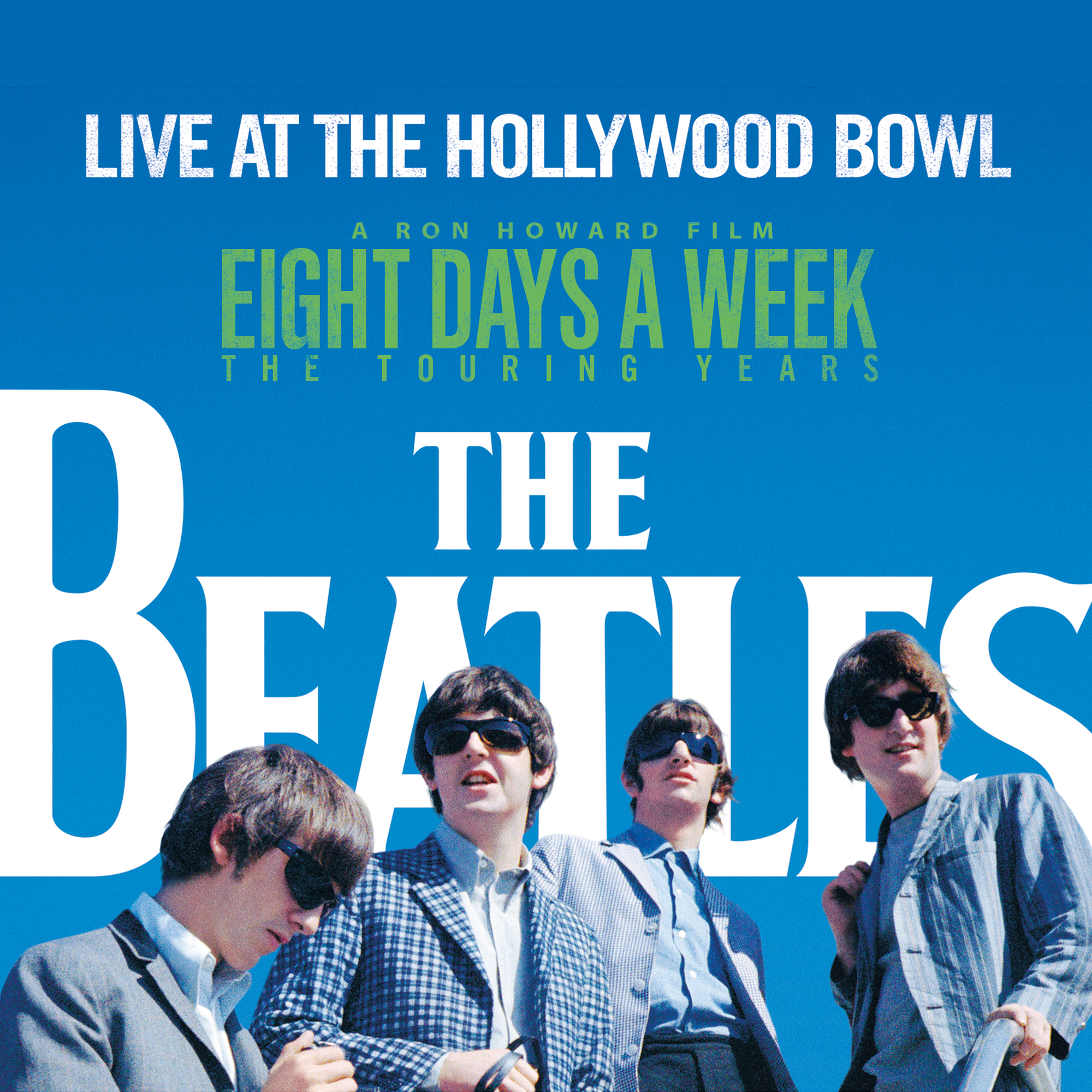
The Beatles: Live At The Hollywood Bowl captures the joyous exuberance of the band’s three sold-out concerts at Los Angeles’ Hollywood Bowl in 1964 and 1965. A companion to The Beatles: Eight Days A Week - The Touring Years, Academy Award®-winner Ron Howard’s authorized and highly anticipated documentary feature film about the band’s early career, The Beatles: Live At The Hollywood Bowl was released worldwide on CD and for digital download and streaming on September 9, followed by a 180-gram gatefold vinyl LP on November 18. The album includes a 24-page booklet with an essay by noted music journalist David Fricke, and its cover art features a sunny photo taken on August 22, 1964 by The Beatles’ then-U.S. tour manager, Bob Bonis, as John, Paul, George and Ringo boarded a chartered flight from Seattle Tacoma Airport to Vancouver, BC for their first concert in Canada.
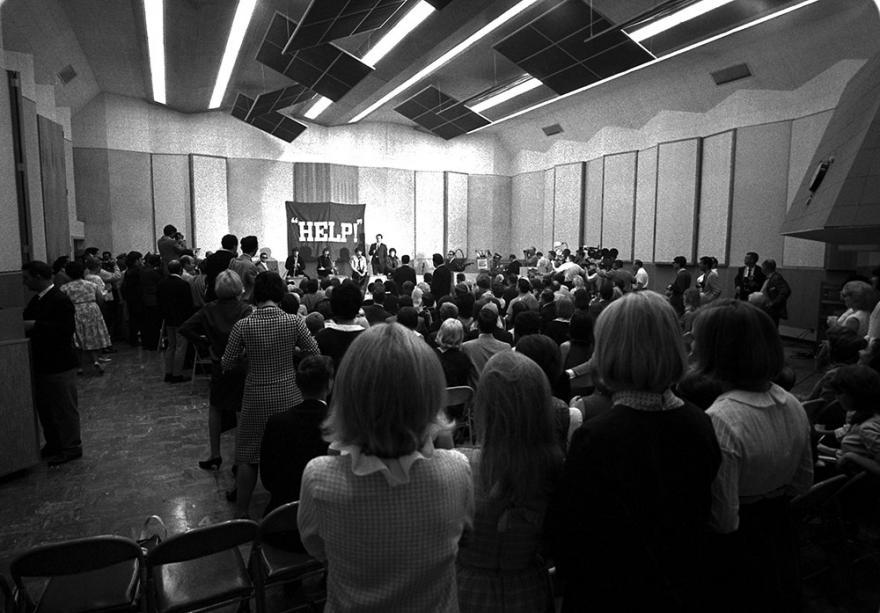
Documenting The Beatles’ Hollywood Bowl concerts on tape was no easy feat, as producer Sir George Martin explained in his album notes for 1977’s The Beatles At The Hollywood Bowl: “The chaos, I might almost say panic, that reigned at these concerts was unbelievable unless you were there. Only three track recording was possible; The Beatles had no ‘fold back’ speakers, so they could not hear what they were singing, and the eternal shriek from 17,000 healthy, young lungs made even a jet plane inaudible.”
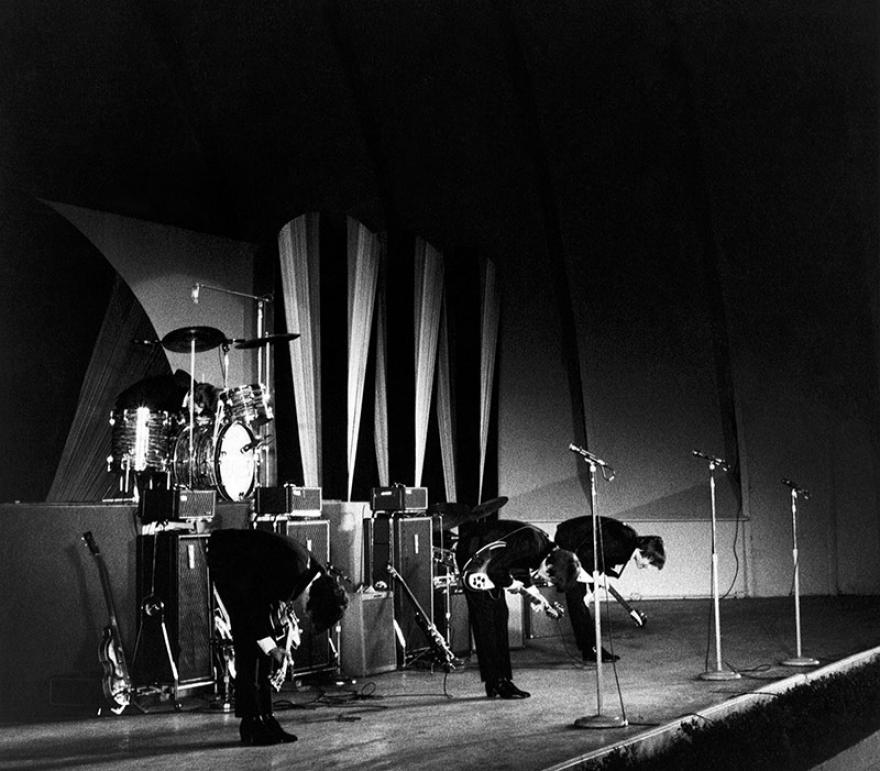
While The Beatles: Live At The Hollywood Bowl references the long out of print 1977 album, it is an entirely new release, directly sourced from the original three track tapes of the concerts. To preserve the excitement of the shows while unveiling the performances in today’s best available clarity and quality, GRAMMY Award® winning producer Giles Martin and GRAMMY Award® winning engineer Sam Okell have expertly remixed and mastered the recordings at Abbey Road Studios, including the thirteen tracks from the original album produced by Giles’ father, plus four additional, previously unreleased recordings from the momentous concerts.

Brian Epstein: the brilliant but troubled man behind the Beatles
He was the architect of the Fab Four's success, but his life was one of torment, and ultimately tragedy, as he tried to live with his homosexuality in a time when it was against the law. Jon Savage explores the man without whom, there would be no Beatles

- Share on facebook
- Share on twitter
- Share on whatsapp
- Email to a friend
In February 1962, Brian Epstein travelled to London to hear the results of The Beatles’ demonstration test they had recorded a month earlier. The meeting with talent scout Dick Rowe was held in the Decca Records executive dining room on the South Bank. Feeling sure that The Beatles would be offered a contract, Epstein was devastated to receive a rejection. His response was typical: “You must be out of your mind,” he retorted. “These boys are going to explode. I am confident that one day they will be bigger than Elvis Presley.”
There was nothing bigger than Elvis Presley , and nothing less current, as far as A&R (Artists and Repertoire) men were concerned, than guitar groups. Despite the fact that the instrumental only group, the Shadows, regularly had top-ten records, the prevailing wind was for solo performers. The UK top ten for 3 February, for instance, contained eight solo singers and instrumentalists (such as Cliff Richard, Chubby Checker and Billy Fury) and two jazz-band leaders (Acker Bilk and Kenny Ball).
Epstein was flying in the face of the trends, but he was offering the future – always a tricky thing for the music industry to handle, preferring as it does simple formulae despite the perennial demand for novelty. His retort would have been laughed off in early 1962, particularly as it came from the manager of a group from Liverpool, but Epstein’s prediction came true. The Beatles eclipsed Elvis, and Epstein had been first to conceive of the thought, even before the group themselves.
- Read more | The Beatles: 8 landmark moments that chart the changing face of sixties Britain
Assuming The Beatles’ management in December 1961, Epstein quickly started as he meant to go on. He tightened up their date sheet, gave them itineraries, got more money, and started to seek a record contract. He also got them out of the black leather outfits they had worn for most of 1961 and into smart Italian-style suits. John Lennon later complained about it, but this was the statement of a reformed sinner. All the group agreed to the change because they all wanted success.
Epstein grounded The Beatles. He gave them unconditional love in the widest sense – which they sometimes abused, but basically respected and appreciated – and deftly oriented them within the show-business mores of the day. The Beatles would, from 1965 on, change the music industry forever, but until then, becoming a successful pop group involved doing variety shows, wearing uniform clothes, and being polite and disciplined. With his theatrical training and interest in presentation, Epstein turned a group of Liverpool hard rockers into a prototypical Boy Band.

More like this
Within 18 months of his involvement, The Beatles had the top single and album in the UK: From Me To You (seven weeks at the top) and Please Please Me (#1 for 30 weeks). By autumn, they had become a national phenomenon and, by April 1964, Beatlemania swept the US , with the top five singles in the Billboard charts. This was a cultural revolution, and – apart from the group and producer George Martin – the man who had engineered it was Brian Epstein.
The Epstein factor: 5 reasons why he was so successful
- Read more | How The Beatles broke America
Who was Brian Epstein?
Born in September 1934 as the first child to a comfortably off Jewish family, Epstein was an outsider by the time he was a teenager. His education was interrupted by frequent school moves and his army career (this being the age of enforced national service). Dissatisfied while working in his family’s business, NEMS (North End Music Stores) – as a teenager he had expressed the desire to be a dress designer – he went to the prestigious RADA drama school for a year in 1956, but didn’t stay the course.
Nevertheless, his theatrical bent served him in the record shops that NEMS opened after his return. Epstein developed an ear for future pop hits – for instance, buying in hundreds of copies of John Leyton’s Johnny Remember Me well before it rose to number one – and a flair for presentation that made NEMS one of the most important record retail outlets in the North West. With an ordering policy of at least one copy of almost every single released, it was a magnet for Liverpool youth, including the four fledgling Beatles.
Despite his business successes, he was drifting, directionless and dissatisfied. Yet all this changed on 9 December 1961, when Epstein went to see The Beatles play a lunchtime session at the Cavern Club. He was aware of the group name from posters around the city and, more pertinently, from customer requests for their German-only release My Bonnie . When he met them that day, he recognised at least one as a regular customer in NEMS. But that wasn’t what hit him.
“Something tremendous came over,” he stated in his 1964 autobiography A Cellarful of Noise , “and I was immediately struck by their music, their beat, and their sense of humour on stage. They were very funny; their ad-libbing was excellent. I liked them enormously… I thought their sound was something that an awful lot of people would like. They were fresh and they were honest and they had what I thought was a sort of presence, and – this is a terrible, vague term – ‘star quality’. Whatever that is, they had it — or I sensed that they had it.”
This was an instinctive decision, indeed a conversion. In the Beatles, Epstein found his cause. He adored them as artists, and they provided a focus for his wish to change the world. Much of his restlessness and unhappiness was caused by one incontrovertible fact – he was homosexual (queer, in the parlance of the era) at a time when society was very proscriptive of same-sex relationships.
- Read more | From the ancient world to the 1969 Stonewall Riots: a brief guide to LGBTQ+ history
Any physical expression of his sexuality was illegal, leaving him open to violence, imprisonment and blackmail (especially since he took risks). Many gay men ignored these oppressive conditions and got on with their lives, but Epstein was sensitive, angry and burning at injustice. In April 1957, he was arrested for ‘persistent importuning’ by a police provocateur in a Swiss Cottage toilet (public toilets, or ‘cottages’, were frequently used by gay men for sex, which was a fact frequently exploited by ‘pretty policemen’ who would indicate interest and then put the handcuffs on).
He was devastated. In a hand-written document to be used in his defence, he railed: “The damage, the lying criminal methods of the police in importuning me and consequently capturing me leaves me cold, stunned and finished.” But this unpleasant event gave him a wider understanding of what it was to be an outcast: “I feel deeply, because I have always felt deeply for the persecuted, the Jews, the coloured people, for the old and society’s misfits.”
Homosexuality and the law
- Read next | Aids: the epidemic that changed Britain
It was this realisation that led Epstein away from a conventional career path into pop management. In late 1961, he found an outlet for his visions in a scruffy group that nobody wanted. The Beatles also felt like outcasts at that point, and both parties saw something in each other that went beyond business. They recognised a mutual need. Once the Beatles had found success, Epstein did another extraordinary thing in terms of pop management. Instead of the customary Svengali act, he set them free artistically. In this, they were encouraged by producer George Martin.
Rather than tell the Beatles what to do and what songs to play, as was standard practice at the time, he worked with the group to help them realise their vision. Anything more unlike Elvis – who was railroaded during the sixties by manager ‘Colonel Tom’ Parker into a series of poor Hollywood films with dreadful songs – could not be imagined. By 1965, the Beatles were on top of the world, globally successful on their own terms.

Sexuality, drugs and rock and roll
Epstein himself was extremely rich and validated – not only with The Beatles, but with his other acts like Cilla Black and Gerry and the Pacemakers – but success did not bring stability. The patterns of his early life were set. He continued to indulge in risk-taking behaviour, both in his private life and his leisure activities, such as his reckless gambling habit and a reliance on pills and prescription drugs that began to take over his daily life.
The year 1966 was when The Beatles found the limits of their freedom, most notably when a chance comment by Lennon about the group being “more popular than Jesus” caused a furore. Death threats and burnings of Beatle products overshadowed the 1966 American tour . Epstein conducted a successful damage-limitation campaign – the shows went ahead but the Beatles had had enough, and unilaterally decided that they would give up touring.
For Epstein, this was a shattering blow. He loved the planning and the activity of the tours. Without this function, he felt his connection with the Beatles weakening. His poor mental state was compounded by the fact that, during the Beatles’ last concert, he had been robbed of money and incriminating documents by his then-partner, ‘Dizz’ Gillespie.
The year 1966 was when the Beatles found the limits of their freedom, most notably when a chance comment by Lennon about the group being “more popular than Jesus” caused a furore. Death threats and burnings of Beatle products overshadowed the American tour
At the end of September 1966, he attempted suicide, but was found by assistant Peter Brown and rushed to hospital. After recovering, Epstein, knowing the Beatles would not reconvene for three months, took on a West End venue called the Saville Theatre and showcased pop concerts. One of his first promotions, in November 1966, was the Four Tops, then at number one with Reach Out, I’ll Be There . In January 1967, he undertook a merger between NEMS and the company of Robert Stigwood, manager of Cream and later the Bee Gees. He began taking LSD, which appeared to have a beneficial effect on his psyche.
There was still Beatle business, though: the renegotiation of their EMI contract in January 1967, the Penny Lane/Strawberry Fields Forever single, and Sgt Pepper’s Lonely Hearts Club Band album. In one of his last acts for the group, Epstein arranged a video recording of their new single to be played as Britain’s segment on the Our World global television link. On 25 June 1967, All You Need Is Love beamed to over 400 million viewers in 25 countries.
Brian Epstein's death
On 27 July 1967, male homosexuality was partially decriminalised. Exactly a month later, Epstein was found dead at his Belgravia home. Although the circumstances were not crystal clear, it seems likely that his death was an accidental prescription-drug overdose. Although this made national news, none of Epstein’s obituaries mentioned that he was homosexual. The relative liberalisation of the mid-sixties had, for him, come too late.
There is a distinct irony in the fact that Epstein died so soon after the passing of legislation that would, in time, make life better for homosexual people. With the Beatles, he helped to instigate the social changes that were the backdrop to the liberalising legislation of the sixties, but he was unable to benefit. The stigma had gone too deep. The guilt and poor self image that built up over all those years in the shadows made it impossible for him – as it still does for many gay men – to avoid extreme risk-taking and the attendant consequences.
For years, history was not kind to Epstein. He died early in the story and was not around to defend himself. He was accused of personal and financial misdemeanours, most particularly in the disastrous story of the Beatles’ US merchandising company, Seltaeb. No doubt he did make mistakes, but this was an extraordinary event of unreckoned magnitude. Yet, simply, the Beatles would not have happened without Brian Epstein. In this respect, he should be counted as a man who altered the course of 20th-century history.
The Beatles' views on Brian Epstein
This article was first published in the February 2018 issue of BBC History Revealed
Jon Savage is a music journalist and author of numerous biographies on bands like The Kinks, the Sex Pistols and Joy Division. He is also the author of 1966: The Year the Decade Exploded (Faber & Faber, 2015)

JUMP into SPRING! Get your first 6 issues for £9.99
+ FREE HistoryExtra membership (special offers) - worth £34.99!
Sign up for the weekly HistoryExtra newsletter
Sign up to receive our newsletter!
By entering your details, you are agreeing to our terms and conditions and privacy policy . You can unsubscribe at any time.

JUMP into SPRING! Get your first 6 issues for

USA Subscription offer!
Save 76% on the shop price when you subscribe today - Get 13 issues for just $45 + FREE access to HistoryExtra.com

HistoryExtra podcast
Listen to the latest episodes now
McCartney Times
- Paul McCartney Music
- Paul McCartney Artwork
- Linda McCartney’s Work
- The Linda McCartney Centre
- Jim McCartney
- Mary McCartney
- Stella McCartney, OBE
- James McCartney
- Heather Eastman McCartney
- Mrs. McCartney’s Wines
- Mrs. McCartney’s Teas
- Mrs. McCartney’s CBD
- Angie’s Book – My Long & Winding Road
- Ruth McCartney
- Mike McGear McCartney
- Benna McCartney
- John Lennon
- Paul McCartney
- George Harrison
- Ringo Starr
- Beatle People
- The Beatles’ Albums
- Books about The Beatles
- McCartney Multimedia, Inc
- McCartney Studios
- Mrs. McCartney’s Teas
- Mrs. McCartney’s Wines
- McCartney Sports
- Contributors
The Beatles Story, Liverpool, has announced an exciting new addition to its ever-growing exhibition with the inclusion of a previously unseen notebook belonging to The Beatles’ Tour Manager Mal Evans.
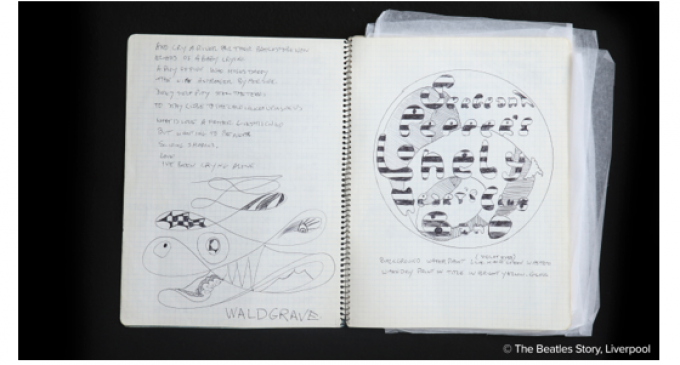
The Beatles Story, Liverpool, has announced an exciting new addition to its ever-growing exhibition with the inclusion of a previously unseen notebook belonging to The Beatles’ Tour Manager Mal Evans. The rare notebook, compiled between 1967-68, features Paul McCartney’s handwritten draft lyrics for ‘Hey Jude’, a part-lyric for ‘Sgt Peppers Lonely Hearts Club Band’, recording notes by George Harrison for ‘All You Need Is Love’ as well as lyrics for a number of other songs including ‘For The Benefit of Mr Kite, ‘Good Morning Good Morning’ and ‘All Together Now’. Filled with original scribbles using brightly coloured ink from John, Paul, George, Ringo and Mal, the notebook offers a glimpse into the ground-breaking era in Beatles’ history when they produced ‘Sgt Pepper’ and ‘The White Album’. As well as lyrics, poetry and doodles, the notebook also includes a design for the famous ‘Sgt Pepper’ drumskin featured on the cover of the record, and a list of other requirements for the song, including a ‘piano painted for John’. Stephen Maycock, Consultant Specialist in Beatles Memorabilia, said: “Mal’s notebook is a unique document, covering as it does such an important period in the career of the most important band in pop music history. It provides a fascinating insight into the Beatles’ creative process and shows just how close Mal was to that”. Liverpool-born Mal Evans was a telecoms engineer and part-time bouncer at The Cavern Club, Liverpool. By August 1963, The Beatles were becoming so popular that they needed a bodyguard/roadie and Mal fitted the bill. Working in tandem with Neil Aspinall, Mal became one of The Beatles trusted inner circle and he stayed with the band throughout their career. His appearance in Peter Jackson’s recently released ‘Get Back’ documentary captivated viewers and showed his close relationship with The Beatles with subsequent reports of Mal’s biography set to be released in 2023. Download our images below. Described as the ‘ultimate memento’, the item was put up at Sotheby’s rock and pop memorabilia auction by Mal’s widow Lily Evans in 1998, following the death of her husband in 1976 when he was killed by Los Angeles police after brandishing an air rifle. Purchased by Liverpool businessman Alan Murphy for his daughter Davinia’s 21 st birthday, who played ‘Jude’ in popular UK soap series ‘Hollyoaks’. Mr. Murphy has also recently announced plans for a £100m renovation development in Liverpool, the home of the Fab Four. Davinia said: “ As a family we are absolutely delighted to be able to share this treasure worldwide. As a Scouser and huge Beatles fan, my dad felt it was so important for the notebook to be available in his hometown of Liverpool and for everyone to enjoy these precious insights into the world’s best band!” Mary Chadwick, General Manager of The Beatles Story said: “The notebook is an extremely exciting addition to our attraction, and we are delighted to showcase this valuable piece of history at The Beatles Story. The story of Mal’s relationship with the band after the recent ‘Get Back’ documentary has sparked a keen interest from fans, and each page tells a story. Along with Paul’s handwritten ‘Hey Jude’ lyrics, the notebook offers visitors a unique glimpse into their lives at the time.” The notebook will be on display for visitors to Liverpool’s leading Beatles’ attraction, The Beatles Story, from February 2022. The interactive demonstration will include a digital display scrolling through every page of the notebook and the ‘Hey Jude’ lyrics alongside a biography about Mal Evans. Press Launch A press launch and photocall with Davinia will take place on Tuesday February 22 nd at The Beatles Story. For more information and to book attendance, please contact Alex Goldsmith, Think PR at [email protected] . About The Beatles Story, Liverpool: The Beatles Story, Liverpool is the world’s largest permanent, award-winning attraction telling the story of The Beatles. Visitors take an immersive journey through the lives, times, and music of the world’s greatest band. Discover the Fab Four’s story through recreations of key locations and moments from the band’s career including The Casbah Club, Hamburg, The Cavern Club, Abbey Road Studios, America along with an impressive collection of fascinating authentic memorabilia, never-seen-before photography, and musical instruments. Multimedia audio guides are provided in 12 languages narrated by John Lennon’s sister, Julia. www.beatlesstory.com About Davinia Taylor: Davinia Taylor (born Davinia Murphy) is an English actress, socialite and interior designer, best known for playing Jude Cunningham in the soap opera ‘Hollyoaks’. Davinia’s father, Alan Murphy, is a multi-millionaire and ran the AM Paper toilet roll factory in Skelmersdale
About Author
- Martin Nethercutt
Martin A Nethercutt is a writer, singer, producer and loves music. Creative Director at McCartney Studios Editor-in-Chief at McCartney Times Creator-in-Chief at Geist Musik President (title) at McCartney Multimedia, Inc. Went to Albert-Schweitzer-Schule Kassel Lives in Playa del Rey From Kassel, Germany Married to Ruth McCartney
Related Articles
- Elton John, Shakira Named in Pandora Papers Tax Leak – The Hollywood Reporter 0
- The Beatles song that took the longest to record 0
- Yoko Ono comes home: Up close and personal for a few minutes | Inquirer lifestyle 0
There are no comments at the moment, do you want to add one?
Only registered users can comment.
Recent Posts
- Beyoncé Made My Favorite Beatles Song Even Better | The Everygirl
- Prague’s Lennon Wall – political evolution or erasure? – Youth Journalism International
- When John Lennon called George Harrison “Out” of favour
- Paul McCartney Shares Statement On Beyoncé’s “Blackbird” Cover
- May Pang To Showcase Her Candid Photos Of Lennon At A 2-Day Exhibition At Gallery 42
- February 2024
- January 2024
- December 2023
- November 2023
- October 2023
- September 2023
- August 2023
- February 2023
- January 2023
- December 2022
- November 2022
- October 2022
- September 2022
- August 2022
- February 2022
- January 2022
- December 2021
- November 2021
- October 2021
- September 2021
- August 2021
- February 2021
- January 2021
- December 2020
- November 2020
- October 2020
- September 2020
- August 2020
- February 2020
- January 2020
- December 2019
- November 2019
- October 2019
- September 2019
- August 2019
- February 2019
- January 2019
- December 2018
- November 2018
- October 2018
- September 2018
- August 2018
- February 2018
- January 2018
- December 2017
- November 2017
- October 2017
- September 2017
- August 2017
- February 2017
- January 2017
- December 2016
- November 2016
- October 2016
- September 2016
- August 2016
- February 2016
- January 2016
- December 2015
- November 2015
- October 2015
- September 2015
- Beatles Fans
- Beatles Locations
- Beatles Tribute Bands
- Brian Epstein
- Dr. Angie McCartney
- GEIST Book of Shadows
- Julian Lennon
- Linda McCartney
- McCartney Family News
- McCartney Multimedia
- Mrs. McCartney's Teas
- Mrs. McCartney's Wines
- Other Related Articles
- Stella McCartney
- The Beatles
- The Beatles Artifacts
- McCartney Companies

Loading, Please Wait!
What We Know About The Relationship Between The Beatles And Jimmy Savile
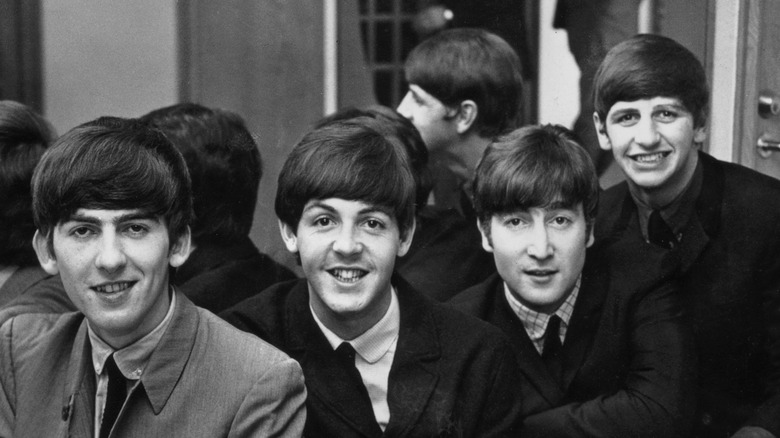
This article contains mentions of sexual assault and child sex abuse.
The four members of The Beatles , along with radio and television presenter Jimmy Savile , were all British icons who rose to massive fame in the 1960s. As many already know, the Beatles went on to achieve international fame and almost single-handedly changed the trajectory of music. Savile's popularity as the long-running host of the program "Top of the Pops," while immense, was more or less relegated to the United Kingdom. Still, both represented the same era of rapidly shifting popular culture, crossing paths on more than a few occasions. In fact, the Beatles and Savile had, for a time, a kind of a working relationship, with the famously eccentric Savile even emceeing the band's Christmas shows, as The Independent noted in 2012.
Make no mistake, however, that while the band and the presenter's lives intersected and intertwined, their legacies landed in two completely different categories. Though the Beatle's esteemed impact is as strong as it ever was, Savile's was left in shambles following posthumous revelations related to long-swirling rumors of sexual assaults perpetrated against children believed to have numbered in the hundreds, per The Guardian .
Who was Jimmy Savile?
While Jimmy Savile was, for decades, a household name in the United Kingdom, he may not ring a bell for those who grew up elsewhere. According to Britannica , Savile was born in the English city of Leeds in 1926. By the time World War II had drawn to a close, in 1945, the 20-year-old Savile was working as a coal miner when he suffered injuries in an explosion — an accident that would lead him down another path entirely.
After recovering, Savile then began managing a dance hall and eventually landed on the radio airwaves, where he quickly became one of the nation's top DJs. Savile then parlayed his radio notoriety into a hosting spot on the legendary British music television program "Top of the Pops," a chart-tracking series aimed at British youth which ran from 1964 to 2006 and featured countless big-name acts performing in front of a studio audience.
Savile also spent nearly two decades hosting a program called "Jim'll Fix It," in which children wrote letters to the show (and Savile), and he, in turn, granted their wishes. Over the years, Savile developed a comedic style that endeared him to viewers. Along with that, he cultivated an eccentric image, one emphasized by typically long, platinum-blonde hair, a garish wardrobe, and an ever-present, smoldering cigar clenched between his teeth.
The Beatles' early days
Around the same time as Savile's rise as one of the U.K.'s preeminent disc jockeys, a group of kids from Liverpool were in the early days of playing music together. According to Biography , Liverpool seemed like an unlikely place for the most successful band in history to hail. In the late 1950s and early 1960s, it was a somewhat poor, working-class city — but the work ethic a Liverpudlian upbringing instilled in Paul McCartney, John Lennon, George Harrison, and Ringo Starr paid dividends in their brief but meteoric, unprecedented time together as a band.
All four band members took that work ethic with them across the English Channel and into continental Europe in 1960, where they became a frequent presence in the clubs around Hamburg, Germany. According to a 2019 write-up by the Los Angeles Times , one of the more famous spots they played there was the Indra Club, where the band was hired to perform a grueling five hours a night, six hours per week — all for the princely sum of around 30 Deutsch marks (or $51 USD at that time) each week. Despite this, the Beatles used their employment at the Indra Club to hone their craft. But before they could, or would, eventually take over the world, they needed to take over their home country first — and it was while they were back in England, traveling around, that they met Jimmy Savile.
The Beatles once gave Savile a ride home
Years before the band's Apple Corps headquarters coincidentally sat on Savile Row , they gave Jimmy Savile a ride home from a show. According to a 2012 interview with The Independent , Paul Mccartney recalled how he knew Savile during the band's early days, and on one particular occasion, how they gave the eccentric DJ a lift. "We were working in Yorkshire and we were still living in Liverpool," McCartney recounted. "We were coming back from a gig and he came in our van over the Pennines. We gave him a lift. He told us all these stories about his wartime exploits how he had been buying chewing gum and nylons and all that, and selling them. He had all sorts of stuff going on."
The moment that struck the band members as odd, however, was when they arrived at Savile's home and asked if they could come in for coffee. " He said, 'oh, no, not tonight lads,'" McCartney said. "When he'd gone we thought, 'why doesn't he let us in, what is it, because most people would have let us in that we gave a lift to?' So we always thought there was something a little bit suspect."
Jimmy Savile hosted the Beatles' Christmas shows
By 1963, the Beatles' stock had grown astronomically. That year, the band's manager, Brian Epstein, came up with the idea of the band playing a series of Christmas shows. These weren't straight-up concerts — they were more like variety shows, featuring a series of musical acts with some comedy sketches woven in between. According to The Beatles Bible , those shows were a success (despite some criticism that the band's acting in their comedy sketches was a bit stiff), and they were brought back the following year. This time, however, they included a new addition: a host to introduce the bands. And who better to take on that role than one of the most popular DJs of the day, Jimmy Savile?
Savile emceed these holiday shows throughout their run, from Christmas 1964 into mid-January of 1965, often featuring two shows every night. Some of the guest acts at the time included Freddie and The Dreamers, Elkie Brooks, and the Yardbirds, who at that time featured Eric Clapton on lead guitar.
Jimmy Savile's eventual downfall
Following their Christmas shows in the early 1960s, the Beatles moved forward with what would become a legendary career together until they disbanded in the 1970s. Meanwhile, Jimmy Savile gained popularity as a beloved television fixture known for his charity work in addition to his television duties, per the BBC . He eventually achieved knighthood and became close with members of the royal family — and even Prime Minister Margaret Thatcher.
Despite his high profile, rumors of Savile's seedy personal life permeated most of his career. Reports of sexual assaults perpetrated by Savile were reported as far back as 1955, but the full extent of his atrocities wasn't known until after his death in 2012, as The Guardian reported in 2014. Looking back, authorities identified that much of Savile's abuse occurred in schools and hospitals that he was known to visit frequently, all under the guise of charity work. Many early reports to police were seemingly brushed off, and the files related to them have never been recovered.
If you or anyone you know has been a victim of sexual assault, help is available. Visit the Rape, Abuse & Incest National Network website or contact RAINN's National Helpline at 1-800-656-HOPE (4673).
If you or someone you know may be the victim of child abuse, please contact the Childhelp National Child Abuse Hotline at 1-800-4-A-Child (1-800-422-4453) or contact their live chat services .
‘Me and Mr. Jones’ Is a First-Hand View of David Bowie’s Rise to Superstardom, in All Its Glory and Cruelty: Book Review
By Jem Aswad
Executive Editor, Music
- Sean ‘Diddy’ Combs Posts Seemingly Defiant Video Amid Sexual Misconduct Allegations: ‘Bad Boy for Life’ 23 hours ago
- Keith LeBlanc, Pioneering Drummer on Early Hip-Hop Classics by Grandmaster Flash and Sugar Hill Gang, Dies at 69 2 days ago
- Music Industry Moves: Downtown Music Completes Integration, Names Pieter van Rijn CEO 2 days ago

Considering the vast number of books published every year about David Bowie — or, for that matter, the Beatles, Bob Dylan and Prince — a new one had better have either fresh info or fresh insights. Thankfully, Suzi Ronson’s “Me and Mr. Jones: My Life with David Bowie and the Spiders from Mars” delivers on both counts.
She was swept up into that whirlwind quickly, initially joining for British dates, then a long American tour and then, over just the first half of 1973, another American tour, two weeks in Japan, and two more British tours. During this time Bowie soared to superstardom and became the most successful artist in Britain since the Beatles — and then abruptly “retired,” although all he was retiring was the Ziggy character.
Through it all, Suzi Ronson not only spent many hours with Bowie – she handled his and the band’s wardrobes and was waiting with a cigarette and glass of wine when he came offstage every night – she had a front-row seat to the drama of his rise and its impact on him and everyone around him. Most fascinatingly, she experienced the fluctuations in his behavior, common to so many superstars: the way he could shift from cold and distant to intensely attentive from one day to the next — and how, on one night, a haircut appointment turned into an intimate dinner and the one time she slept with him (he and Angie famously had an open marriage).
Yet she also saw the brutal callousness he could display when it came to business (the musicians in the Spiders From Mars were notoriously underpaid) and when he sensed betrayal. When the group rebelled during the first American tour, after learning that guest pianist Mike Garson’s salary was literally ten times more than theirs, he launched a campaign that found him parting ways with all of the Spiders within a year. Drummer Mick “Woody” Woodmansey, who had spoken disparagingly to and about Bowie during the tour, and bassist Trevor Bolder were seemingly singled out for exceptionally cruel treatment: Bowie not only didn’t tell them he was breaking up the band — they didn’t find out until he announced onstage at the end of the tour’s last concer t — Woodmansey was told on his wedding day that he was fired.
Suzi did not begin a romantic relationship with Mick Ronson until the very end of his time with Bowie, but they would remain together from that point until his death from liver cancer in 1993 (the same disease that would take Bowie nearly 25 years later). Mick had a more agreeable parting with Bowie and Defries, the latter of whom was positioning him for solo superstardom. But despite the over-the-top tactics that had worked so well for Bowie – a billboard on Sunset Strip, limos, expensive hotels – Ronson, although an enormously talented and charismatic musician, was not a superstar frontman. The book also covers that era, and whether intentionally or not, the sense of entitlement Mick and Suzi felt during that time comes through.
As has happened countless times, the lofty treatment and talk of superstardom went to their heads, although it wouldn’t be long before they came crashing back down to earth (and realized that those limos and hotel rooms were recoupable from Ronson’s earnings). Ronson was back in his more-comfortable role as guitarist and collaborator before 1974 ended, and the book covers his subsequent work with Mott the Hoople, Ian Hunter and Bob Dylan – although it drops off, rather curiously and abruptly, in the late ‘70s.
Suzi, who would not see Bowie or Angie again after they parted ways late in 1973, is unvarnished and unforgiving in her opinions about the star’s cruelty. “He blamed [disloyalty and] cocaine for his bad behavior. I laugh when I read this and don’t believe it for a second,” she writes. “It was raw, naked ambition, and a bloody-mindedness that is particular to a few people… It was revenge and control.
The talent, charisma, ego and survival skills it takes to become a superstar also tend to make people manipulative at best and cruel at worst, and this book displays all of the above in Bowie and more. “Me and Mr. Jones” is a first-hand view of the glory and brutality that comes with a rapid rise to stardom.
More From Our Brands
See noah kahan bring out shawn mendes for ‘stick season’ at toronto concert, how todd snyder is decoding luxury menswear for a new generation, purdue, uconn advance as host committee seeks another final four, the best loofahs and body scrubbers, according to dermatologists, march madness 2024: how to watch iowa vs. south carolina in women’s national championship, verify it's you, please log in.
Watch CBS News
Beyoncé's "Cowboy Carter" breaks streaming records
By Caitlin O'Kane
April 2, 2024 / 9:48 AM EDT / CBS News
Last week, Beyoncé released "Cowboy Carter," a 27-track country album the bends the genre and has already made history. Fans clearly can't get enough of the album, which has already broken streaming records on several platforms.
Spotify announced on social media last week that on the day the album dropped, Friday, March 29, it became the platform's most-streamed album in a single day in 2024 so far.
"Cowboy Carter" also earned the title of most-first day streams of a country album by a female artist on Amazon Music. The album also saw Beyoncé's biggest debut on the streaming platform, Amazon Music shared on social media .
Ahead of the album's release, Beyoncé dropped two singles on Super Bowl Sunday: "Texas Hold 'Em" and "16 Carriages." The former debuted at No. 1 on the Billboard Country Charts, making Beyoncé the first Black woman to top that chart, according to Billboard .
"Texas Hold 'Em" itself bends genres, landing on nine U.S. charts including pop, adult alternative, country, rhythmic, urban and R&B.
The album debuted at No. 2 on Apple Music charts and 26 out of 27 songs are currently on the streaming service's top 100 list.
Beyoncé, a Houston native who is also the album's executive producer, said in a statement it is "the best music I've ever made."
The album features collaborations with stars like Miley Cyrus and versions of iconic songs like Dolly Parton's 1973 hit "Jolene." Parton and Willie Nelson also lend their voices to vignettes on the album, as does Linda Martell, the first commercially successful Black woman country artist.
Beyoncé also covers the 1968 song "Blackbird" by the Beatles, featuring Black country singer-songwriters Tanner Adell, Brittney Spencer, Tiera Kennedy and Reyna Roberts. Her song "Protector" features audio from her 6-year-old daughter, Rumi, and she collaborates on two songs with rapper Shaboozey.
She also samples Nancy Sinatra's 1966 song "These Boots Are Made For Walkin'" on the track "Ya Ya."
Sinatra reacted to the song on social media , writing: "To have a little piece of one of my records in a @Beyonce song is very meaningful to me because I love her. She represents what is great about today's music and I'm delighted to be a tiny part of it. This may be the best sample of 'Boots' yet! And the beat goes on."
Parton also posted about Beyoncé's cover of "Jolene," a scornful song with lyrics that warn a woman to stay away from your man. "Beyoncé is giving that girl some trouble and she deserves it," Parton wrote .
- Beyoncé
- Entertainment

Caitlin O'Kane is a New York City journalist who works on the CBS News social media team as a senior manager of content and production. She writes about a variety of topics and produces "The Uplift," CBS News' streaming show that focuses on good news.
More from CBS News
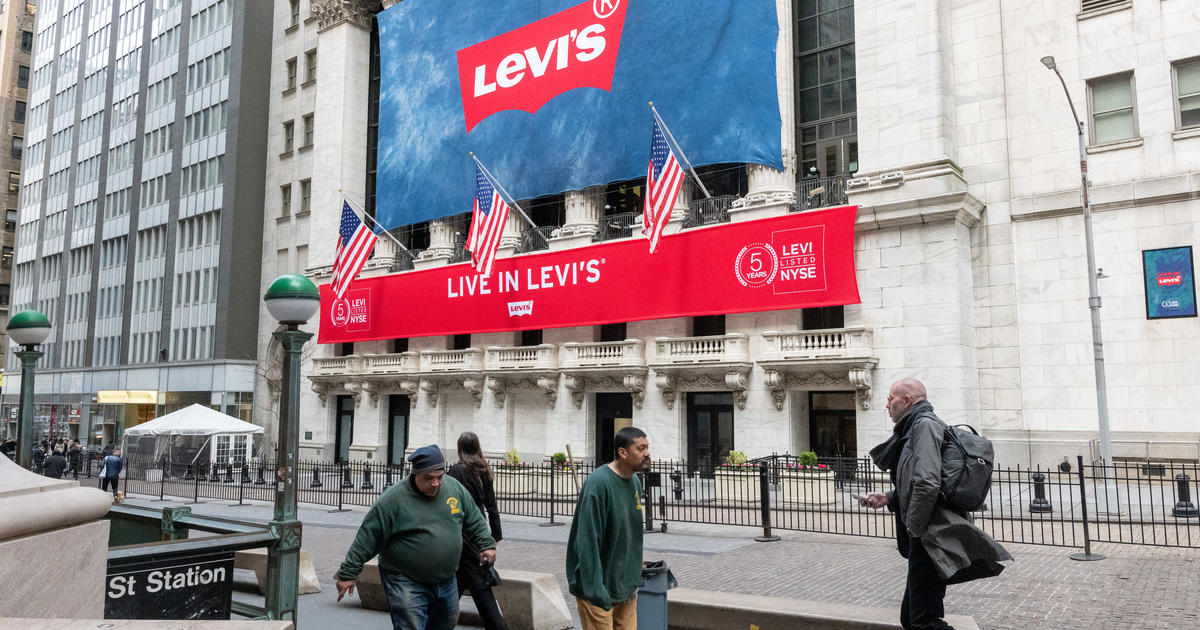
Levi's stock jumps 20%, boosted by Beyoncé song featuring Post Malone

Trump Media shares slide 12% to end second week of trading

CMT Music Awards celebrate country music tonight. Here's what to know.
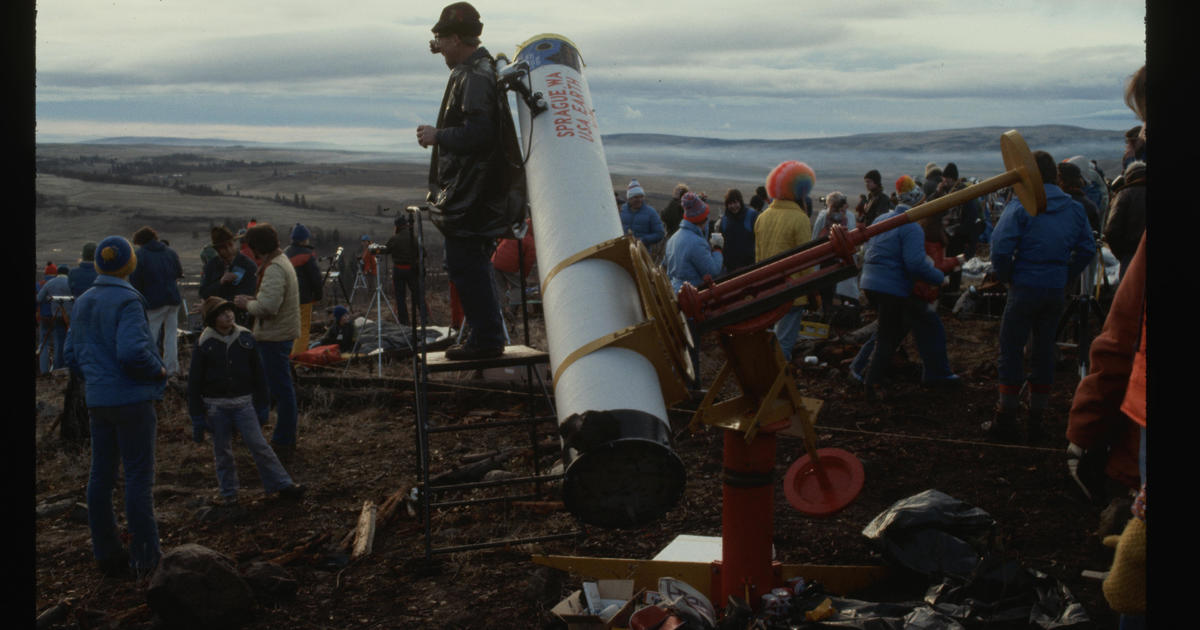
See the list of notable total solar eclipses in the U.S. since 1778

1-718-487-9951
Contact the tour manager on facebook, how to book the beatle tour..., click the found below, for the tour you wish to book, and you will be taken to our booking system to complete your booking. before you book... click here to read important information about our tour. any questions contact us.
Helpful Booking Information: Once you click on the tour you wish to book, you arrive at our booking systems start page for the tour you selected. On the start page, the system requires you to select either 1 or 2 fans to book on the tour. Once the selection is made, you will be taken to the next page in the system to enter your complete booking details. On this page, you may change or add additional fans to your booking.
You must make your deposit payment to save your entry information on the booking form. Once payment has been made, booking is considered confirmed and you may go back and edit your information if needed. We understand, flight information may not be immediately available, so this can be added once known.

The Tour for George April 26 - May 3, 2025

Paul Birthday Tour June 14 - 21, 2025

The Ringo T our July 26 - Aug 2, 2025

John Birthday Tour October 4 - 11, 2025

IMAGES
COMMENTS
Malcolm Frederick Evans (27 May 1935 - 5 January 1976) was an English road manager and personal assistant employed by the Beatles from 1963 until their break-up in 1970.. In the early 1960s Evans was employed as a telephone engineer, and he also worked part-time as a bouncer at the Cavern Club.The Beatles' manager, Brian Epstein, later hired Evans as the group's assistant roadie, in tandem ...
Malcolm "Mal" Evans was The Beatles' road manager... and, when their touring days ended in 1966, he became their personal assistant, mate and general helper. In the Get Back doc, you can spot him ...
The Beatles' road manager and friend Mal Evans will get a biography in 2023, ... Feid Plots Major Arena Run With 2024 North American 'Ferxxocalipsis' Tour Go Time By Larisha Paul.
Neil Stanley Aspinall (13 October 1941 - 24 March 2008) was a British music industry executive.A school friend of Paul McCartney and George Harrison, he went on to head the Beatles' company Apple Corps.. The Beatles employed Aspinall first as their road manager, which included driving his old Commer van to and from shows, both day and night. After Mal Evans started work for the Beatles ...
Brian Samuel Epstein (/ ˈ ɛ p s t aɪ n /; 19 September 1934 - 27 August 1967) was an English music entrepreneur who managed the Beatles from 1961 until his death in 1967.. Epstein was born into a family of successful retailers in Liverpool, who put him in charge of their music shop, where he displayed a gift for talent-spotting.He first met the Beatles in 1961 at a lunchtime concert at ...
It was hilarious. It would've been classic if it had been filmed. They were all funny. Maybe John a little deeper and more biting then the others, but they were all funny - even Ringo and quiet George. Bob Bonis was the tour manager for The Beatles' US tour in 1964, 1965 and 1966.
'Living the Beatles Legend' Review: Mal Evans on Tour The tragic story of the Fab Four's road manager is an account of music history and the madness of Beatlemania. By
American writer and music historian Dr Kenneth Womack speaks to LBN about his forthcoming biography of Mal Evans, the 'gentle giant' who was The Beatles' 'greatest friend'. Tony McDonough reports. Mal Evans was The Beatles' tour manager from 1963 to 1970. For decades the name Mal Evans has been spoken often among Beatles fans and ...
M al Evans, a former road manager for the Beatles, was killed in a confrontation with police in Los Angeles on the night of Jan. 4, 1976. He left behind an estranged wife and two children, a ...
Unedited Interview with The Beatles Tour manager - Tony BramwellAs a five year old, Tony became a friend of George Harrison and Paul McCartney who both lived...
The original contract between Epstein and the Beatles fetched £240,000 (more than $310,000 U.S. dollars) at auction in London in 2008. "He had achieved his wildest dreams but I don't think he ...
Contact the Tour Manager on FaceBook. Get Back Home, Loretta! Tour Dates, Prices & Deals
The wonderful thing about Neil Aspinall, a childhood friend of George Harrison and Paul McCartney who would drive The Beatles' tour van in the early days, and who later became the manager of Apple Corps, is that there was very little drama about him, and would take the band's secrets to the grave. ... The Beatles asked Neil Aspinall to be ...
Gary James' Interview With Beatles Roadie Ed Freeman Ed Freeman is a guitarist, an arranger and producer. He's worked with Don McClean, Carly Simon and Cher. But the focus of this interview is the time Ed spent with The Beatles on their last tour of America in 1966. Q - Ed, were you a Road Manager or a roadie on this Beatles tour?
Interviews with the manager Allen Klein and the lawyer John L. Eastman offer an icy tit-for-tat on the battle for business control during the band's last days. And Alexis Mardas, a.k.a. Magic ...
The album includes a 24-page booklet with an essay by noted music journalist David Fricke, and its cover art features a sunny photo taken on August 22, 1964 by The Beatles' then-U.S. tour manager, Bob Bonis, as John, Paul, George and Ringo boarded a chartered flight from Seattle Tacoma Airport to Vancouver, BC for their first concert in Canada.
In February 1962, Brian Epstein travelled to London to hear the results of The Beatles' demonstration test they had recorded a month earlier. The meeting with talent scout Dick Rowe was held in the Decca Records executive dining room on the South Bank. Feeling sure that The Beatles would be offered a contract, Epstein was devastated to ...
The Beatles Story, Liverpool, has announced an exciting new addition to its ever-growing exhibition with the inclusion of a previously unseen notebook belonging to The Beatles' Tour Manager Mal Evans.The rare notebook, compiled between 1967-68, features Paul McCartney's handwritten
The Beatles Pilgrimage Tour to The Beatles London and the Beatles Liverpool. Our tour itinerary leaves no Beatles stone unturned. Our Beatles Guides and Tour hosts are FAB. Guest appearances from people that knew The Beatles up close and personal. So witness the lives and music of John Lennon, Paul McCartney, George Harrison and Ringo Star. Best Beatles Guides in the Business. The Beatles Trip ...
The Beatles Pilgrimage Tour has been delighting Beatle fans since 1996. Take our 7 Night Fanventure tour to The Beatles London and Liverpool. Witness the lives and music of John Lennon, Paul McCartney, George Harrison and Ringo Star. Best Beatles Guides in the Business. The Beatles Trip of a lifetime. Read our FAQs.
The Beatles were an English rock band formed in Liverpool in 1960, comprising John Lennon, Paul McCartney, George Harrison and Ringo Starr.They are regarded as the most influential band of all time and were integral to the development of 1960s counterculture and the recognition of popular music as an art form. Rooted in skiffle, beat and 1950s rock 'n' roll, their sound incorporated elements ...
By 1963, the Beatles' stock had grown astronomically. That year, the band's manager, Brian Epstein, came up with the idea of the band playing a series of Christmas shows. These weren't straight-up concerts — they were more like variety shows, featuring a series of musical acts with some comedy sketches woven in between.
The Beatles' 1962-1966, a compilation that reflects their hits from the first half of their near-decade together, is on the rise on a pair of rankings published by Billboard. That set improves ...
Take our 7 Night Fanventure Beatles Tour and see The Beatles London and Liverpool. Witness the lives and music of John Lennon, Paul McCartney, George Harrison and Ringo Star. ... The Beatles Trip of a lifetime. top of page. BOOK ONLINE. Email Us 1-718-487-9951. Contact the Tour Manager on FaceBook. Get Back Home, Loretta! Tour Dates, Prices ...
Suzi Ronson's 'Me and Mr. Jones' is a fascinating first-hand view of David Bowie's rise to superstardom, by his stylist from the 'Ziggy Stardust' era.
The album debuted at No. 2 on Apple Music charts and 26 out of 27 songs are currently on the streaming service's top 100 list. Beyoncé, a Houston native who is also the album's executive producer ...
The Beatles Pilgrimage Tour is easy to book online. The tour has been delighting Beatle fans since 1996. Take our 7 Night Fanventure tour to The Beatles London and Liverpool. Witness the lives and music of John Lennon, Paul McCartney, George Harrison and Ringo Star. Best Beatles Guides in the Business. The Beatles Trip of a life.